Archive for April 2021
QUORA QUESTION #4
Posted on: April 30, 2021
- What exactly is climate change? Global mean surface temperature (GMST) has been steadily rising since either 1760 or 1850 or 1900 or 1950 or the 1970s according to climate scientists. They aren’t sure which year is the correct start year but the rise in GMST is causing changes in regional climate patterns and so it can be understood as global warming or climate change.
- What is causing this to happen? Climate scientists have determined that whenever the current warming did start, there is a sufficient overlap of the warming with the Industrial Economy when the GLOBAL NORTH had started to burn fossil fuels. The carbon in fossil fuels is millions of years old and not part of the current account of the carbon cycle and so the CO2 from burning fossil fuels is an external and unnatural perturbation of the carbon cycle and it therefore causes atmospheric CO2 concentration to rise from year to year and that in turn causes global mean surface temperature (GMST) to rise rise year to year by way of the greenhouse effect of atmospheric CO2. The sequence of higher and higher GMST is understood as global warming and the impact of warming on climate is understood as climate change.
- Are you sure this isn’t part of a natural cycle? Climate scientists have collected paleo proxy data for GMST going back thousands of years through the whole of the current Interglacial called the Holocene. The data are available in this linked document: A Chaotic Holocene Climate? https://tambonthongchai.com/2019/06/11/chaoticholocene/ What we find in these data is that over the 10,000 years or so of the Holocene Interglacial since deglaciation had ended and stabilized, GMST has not been the same but that the whole of the 10,000 years of the Holocene has been a series of chaotic GMST cycles at centennial and millennial time scales alternating between warming and cooling with a GMST range of 3.5C. Skeptics cite these temperature cycles to claim that the current warming period can be understood as a natural cycle. However, climate science has determined that the GMST in the current warming is too high to be part of that natural cycle and that therefore it must have been caused by the industrial economy burning fossil fuels. The NOAA position on this issue is that the Holocene warm period called the Holocene Climate Optimum that gave birth to human civilization was as warm as the current warm period. The climate science position on that issue is that this warming isn’t done yet and it will get warmer.

CHARLES MACKAY
Posted on: April 30, 2021

THIS POST IS A PRESENTATION OF EXAMPLES FROM THE CHARLES MACKAY BOOK “EXTRAORDINARY POPULAR DELUSIONS AND THE MADNESS OF CROWDS” {EPD-MOC} WITH THE PROPOSITION THAT THE CLIMATE CHANGE CRISIS OF OUR TIME IS BEST UNDERSTOOD IN THIS CONTEXT.

EPD-MOC #1: THE MISSISSIPPI SCHEME: The Mississippi Company (French: Compagnie du Mississippi; founded 1684, named the Company of the West from 1717, and the Company of the Indies from 1719[1]) was a corporation holding a business monopoly in French colonies in North America and the West Indies. The rise and fall of the company is connected with the activities of the Scottish financier and economist John Law who was then the Controller General of Finances of France. When the speculation in French financial circles, and the land development in the region became frenzied and detached from economic reality, the Mississippi bubble became one of the earliest examples of an economic bubble. (source: Wikipedia)

EPD-MOC #2: THE SOUTH SEA BUBBLE :
South Sea Bubble, the speculation mania that ruined many British investors in 1720. The bubble, or hoax, centred on the fortunes of the South Sea Company, founded in 1711 to trade (mainly in slaves) with Spanish America, on the assumption that the War of the Spanish Succession, then drawing to a close, would end with a treaty permitting such trade. The company’s stock, with a guaranteed interest of 6 percent, sold well, but the relevant peace treaty, the Treaty of Utrecht made with Spain in 1713, was less favourable than had been hoped, imposing an annual tax on imported slaves and allowing the company to send only one ship each year for general trade. The success of the first voyage in 1717 was only moderate, but King George I of Great Britain became governor of the company in 1718, creating confidence in the enterprise, which was soon paying 100 percent interest. The South Sea Company had been founded in 1711 as a trading and finance company. In 1720 there was an incredible boom in South Sea stock, as a result of the company’s proposal, accepted by Parliament, to take over the national debt. The company expected to recoup itself from expanding trade, but chiefly from the foreseen rise in the value of its shares. These did, indeed, rise dramatically, from 128 1/2 in January 1720 to more than 1,000 in August. Those unable to buy South Sea stock were inveigled by overly optimistic company promoters or downright swindlers into unwise investments. By September the market had collapsed, and by December South Sea shares were down to 124, dragging other, including government, stock with them. Many investors were ruined, and the House of Commons ordered an inquiry, which showed that at least three ministers had accepted bribes and speculated. Many of the company’s directors were disgraced. The scandal brought Robert Walpole, generally considered to be the first British prime minister, to power. He promised to seek out all those responsible for the scandal, but in the end he sacrificed only some of those involved in order to preserve the reputations of the government’s leaders. SOURCE: ENCYCLOPEDIA BRITANNICA

EPD-MOC #3: THE TULIPOMANIA :
Tulip mania was a period during the Dutch Golden Age when contract prices for some bulbs of the recently introduced and fashionable tulip reached extraordinarily high levels, and then dramatically collapsed in February 1637. It is generally considered to have been the first recorded speculative bubble or asset bubble in history. In many ways, the tulip mania was more of a hitherto unknown socio-economic phenomenon than a significant economic crisis. It had no critical influence on the prosperity of the Dutch Republic, which was one of the world’s leading economic and financial powers in the 17th century, with the highest per capita income in the world from about 1600 to 1720. The term “tulip mania” is now often used metaphorically to refer to any large economic bubble when asset prices deviate from intrinsic values. In Europe, formal futures markets appeared in the Dutch Republic during the 17th century. Among the most notable centered on the tulip market, at the height of tulip mania. At the peak of tulip mania, in February 1637, some single tulip bulbs sold for more than 10 times the annual income of a skilled artisan. Research is difficult because of the limited economic data from the 1630s, much of which come from biased and speculative sources. Some modern economists have proposed rational explanations, rather than a speculative mania, for the rise and fall in prices. For example, other flowers, such as the hyacinth, also had high initial prices at the time of their introduction, which then fell as the plants were propagated. The high asset prices may also have been driven by expectations of a parliamentary decree that contracts could be voided for a small cost, thus lowering the risk to buyers. The 1637 event gained popular attention in 1841 with the publication of the book Extraordinary Popular Delusions and the Madness of Crowds, written by Scottish journalist Charles Mackay, who wrote that at one point 5 hectares (12 acres) of land were offered for a Semper Augustus bulb. Mackay claimed that many investors were ruined by the fall in prices, and Dutch commerce suffered a severe shock. Although Mackay’s book is a classic, his account is contested. Many modern scholars feel that the mania was not as extraordinary as Mackay described and argue that not enough price data is available to prove that a tulip bulb bubble actually occurred.

EPD-MOC #4: THE ALCHYMISTS :
WIKIPEDIA LINK; https://en.wikipedia.org/wiki/Extraordinary_Popular_Delusions_and_the_Madness_of_Crowds

The section on alchemysts focuses primarily on efforts to turn base metals into gold. Mackay notes that many of these practitioners were themselves deluded, convinced that these feats could be performed if they discovered the correct old recipe or stumbled upon the right combination of ingredients. Although alchemists gained money from their sponsors, mainly noblemen, he notes that the belief in alchemy by sponsors could be hazardous to its practitioners, as it wasn’t rare for an unscrupulous noble to imprison a supposed alchemist until he could produce gold he said he could produce. (wikipedia)

MODERN POPULAR DELUSIONS AND THE MADNESS OF CROWDS#1: OZONE DEPLETION #1
LINK: https://tambonthongchai.com/2010/05/11/scareology-101-a-brief-history-of-extreme-environmentalism/
1969, The SST: A plan to develop high altitude supersonic airliners with the Boeing 2707 as a concept vehicle. The very high cruising altitude of the SST raised environmental alarms that included both climate change and ozone depletion.
1969, Climate change: An alarm is raised that chemicals and aerosols in the exhaust of the SST jet engines will cause climate change.
1970, Ozone depletion: The climate change theory is quietly shelved after critical reviews by skeptics and a new alarm is raised. Water vapor in the SST jet exhaust will cause a 4% depletion of ozone in the ozone layer causing 40,000 additional cases of skin cancer every year in the USA alone.
1970, Ozone depletion: The water vapor theory is quietly forgotten after critical reviews by skeptics who produced data showing that higher levels of water in the stratosphere is coincident with higher levels of ozone.
1970, Ozone depletion: A new ozone depletion theory emerges. Nitric oxide (NOx) in the SST jet exhaust will cause ozone depletion because NOx acts as a catalyst to destroy ozone without being consumed in the process.
1971, Ozone depletion: A computer model is developed to assess the impact of NOx in SST exhaust on the ozone layer. The model predicts that there will be a 50% ozone depletion and a worldwide epidemic of skin cancer. Animals that venture out during daylight will become blinded by UV radiation. It was an apocalyptic scenario.
1971, Ozone depletion: NOx in the fireball of open air nuclear tests provide a ready laboratory to test the ozone depletion properties of NOx. The computer model predicted 10% ozone depletion by NOx from nuclear testing. Measurements showed no ozone depletion; but the model won anyway and the ozone depletion scare endured.
1972, Death of the SST: We were so frightened by the ozone depletion scare that the SST program was canceled although America’s skies soon became filled with supersonic fighters and bombers spewing NOx without any evidence of ozone depletion or of skin cancer or of blindness in animals.
1972, Nuclear summer: Although not confirmed by the data, ozone depletion by nuclear bombs predicted by the computer model took on a life of its own and morphed into a new catastrophe theory called the nuclear summer.
1972, Nuclear summer: The phrase “nuclear summer” is everywhere in the media. There is a doomsday forecast that the immediate result of a nuclear war will be the total annihilation of the ozone layer. All life on earth will be wiped out by UV radiation. Therefore there can be no winner or loser in a nuclear exchange of sufficient intensity. Mutual assured destruction.
1973, Nuclear summer: Report by the National Academy of Science: An exchange of thousands of megatons of nuclear bombs will increase NOx in the stratosphere by an order of magnitude. The NOx will destroy 30%-70% of the ozone in the northern hemisphere and 20%-40% of ozone in the southern hemisphere. Within a few months we will be blinded and roasted by UV radiation with blistering of the skin. The atmosphere will take 30 years to recover. All of these findings were derived from a sophisticated computer model and these findings were supported by a broad consensus of scientists.
1973, Nuclear summer: Skeptics of the ozone scare point out that the study of nuclear testing did not show any ozone depletion and also that vast amounts of NOx – more than man could ever inject into the stratosphere – is made by nature when solar wind strikes nitrogen in the atmosphere; and therefore that there must be something wrong with the computer model that causes it to over-estimate the effect of NOx on ozone.
1973, Space Shuttle: Unperturbed by the skeptics and emboldened by their SST success, fear mongering scientists turn their attention to the proposed Space Shuttle program. The shuttle design included two solid fuel rockets that emit hydrogen chloride (HCl). Scientists calculated that 50 flights per year would deposit 5000 tons of HCl per year in the stratosphere that could cause a 10% ozone depletion over Florida and 1% to 2% elsewhere. Although the scare was hyped it never got to the SST levels and the space shuttle miraculously survived the ozone scare.
1974, Ozone depletion: The ozone depletion game was now in full gear. Having tasted the power of being able to inflict debilitating fear of ozone depletion, the scientists embarked on a fishing expedition to find other chemicals generated by human activity that could get up to the stratosphere and catalyze the chemical reactions of ozone depletion.
1974, CFC: A new candidate agent for ozone depletion is found. Chlorofluorocarbons are synthetic chemicals used in aerosol sprays and in refrigerant for air conditioners and refrigerators. CFC emissions to the atmosphere accumulate in the stratosphere because there are no sinks to remove them from the lower atmosphere. Up in the stratosphere they are able to catalyze the destruction of ozone. The ozone depletion game was thus begun anew.
1974, Doomsday Theory: When CFCs rise to the stratosphere they are decomposed by UV radiation to release chlorine. The chlorine ion can then catalyze thousands of ozone destruction cycles without being consumed. Up to 40% of the ozone will be destroyed. The chlorine theory was old but its ready supply from CFCs was a completely new angle and so a new doomsday scenario was quickly sketched out for dissemination.
NY Times, September 26, 1974, A big day for Doomsday journalism. The NYT predicts ozone depletion of 18% by 1990 and 50% by 2030 by CFCs will cause skin cancer epidemic, mutation of frogs, blindness in animals and people. The whole world is frightened. The ozone scare had begun anew this time with CFC as the agent of ozone depletion. The scare was very successful and it appeared in various forms almost every day in newspapers and television for the next two decades.
See http://chaamjamal.blogspot.com/2009/11/ozone-hole-news-archives-march-10-1987.html
1983, nuclear winter: Carl Sagan and co-authors publish an article in Science that, based on their computer model, a nuclear exchange between the Cold War rivals or even a single preemptive strike by one upon the other would spew enough particulates and aerosols into the stratosphere to occlude sunlight for weeks causing temperatures worldwide to drop by 30C. Social and human settlement infrastructures will collapse and throughout the world there would be starvation, hypothermia, disease, and death.
1983, nuclear winter: Skeptics point out flaws in the nuclear winter computer model saying that it does not include the effect of oceans and of weather phenomena such as hurricanes that would clear the mist out of the stratosphere; but the nuclear winter scare continued to get top play in the media.
1985, nuclear winter: Sagan and co-authors finally admit that they may have exaggerated the nuclear winter effects of their model but that they did it for a good cause and that was to preserve the deterrence property of nuclear weapons that was thought to be in jeopardy due to improvements in nuclear weapons technology and the dangerous idea contained in the Star Wars program that a nuclear war was winnable.
1980, global warming: scientists detect rising carbon dioxide levels coincident with rising temperatures since the industrial revolution and conclude that the increase in CO2 comes from our use of fossil fuels and that it cause temperatures to rise.
See https://chaamjamal.wordpress.com/2010/05/09/history-of-the-global-warming-scare/
1992, Scientists discover large quantities of chlorine monoxide in the stratosphere above the Arctic circle and announce that it will cause an ozone hole over the Arctic with dire forecasts of UV related disease and destruction to follow.
1992, Scientists announce that the ozone hole problem over the Arctic is worse than previously thought because along with high concentrations of chlorine in the stratosphere they also found unusually low concentrations of NOx in the lower atmosphere. This is bad because “NOx is the immune system of the atmosphere” because it protects ozone from destruction by chlorine.
MODERN POPULAR DELUSIONS AND THE MADNESS OF CROWDS#1: OZONE DEPLETION #2
LINK: https://tambonthongchai.com/2020/09/30/ozone-depletion-part-2/
SUMMARY: The overall structure of changes in total column ozone levels over a 50-year sample period from 1966 to 2015 and across a range of latitudes from -90 to +71 shows that the data from Antarctica prior to 1995 represent a peculiar outlier condition specific to that time and place and not a representation of long term trends in global mean ozone concentration. The finding is inconsistent with the Rowland-Molina theory of chemical ozone depletion and with the use of the periodic “ozone hole” condition at the South Pole as supporting evidence for this theory first proposed in Farman etal 1985. We conclude from this analysis that the Farman etal 1985 paper, a study of brief ozone anomalies at the South Pole that served to legitimize the ozone crisis and the rise of the UN as global environmental protection agency, is a fatally flawed study too constrained by time and space to have any implication for long term trends in global mean ozone concentration.

MODERN POPULAR DELUSIONS AND THE MADNESS OF CROWDS#3: CLIMATE CHANGE:
LINK: https://tambonthongchai.com/2021/04/28/the-new-climate-science/
CLIMATE CHANGE WILL DESTROY THE PLANET
SUMMARY:
Here we propose that the environmentalism fear and fervor of the teenage girls derives from a corruption of the middle school curriculum in the age of tree hugger Bambi environmentalism where environmentalism has morphed from the idea that human welfare can be enhanced by humans managing their surroundings (“Environ” in French)to the Bambi-ism idea in Genesis that humans are the managers and caretakers of nature. The basic middle school curriculum should focus preparing the students for high school with things like math, reading, writing, grammar, The middle school curriculum that used to be these basics has been corrupted by environmentalism of the teachers and it is apparently a kind of environmentalism that can be described as “tree hugger” or “Bambi-ism” where humans are an evil and destructive force upon nature.
THE IMPRESSIONABLE YOUNG KIDS THAT EMERGE FROM MIDDLE SCHOOL THUS SCARED TO DEATH OF A HUMAN DESTRUCTION OF INNOCENT NATURE SCENARIO EASILY INTERPRET CLIMATE CHANGE IN THAT WAY AS HUMANS DESTROYING NATURE. THE ENVIRONMENTALISM INTERPRETATION OF CLIMATE CHANGE BY THESE KIDS AND THEIR DEVASATING FEAR OF CLIMATE CHANGE EXPRESSED BY THE KIDS ARE BEST UNDERSTOOD IN THIS CONTEXT. THE BOTTOM LINE IS THAT OUR EDUCATION SYSTEM HAS BECOME CORRUPTED BY THE ENVIRONMENTAL ACTIVISM OF TEACHERS SUCH THAT THE EFFECT IS A CRUEL FORM OF CHILD ABUSE.


THE NEW CLIMATE SCIENCE
Posted on: April 28, 2021

THIS POST IS A CRITICAL ASSSESSMENT OF THE NEW VOGUE IN CLIMATE SCIENCE WHERE TEENAGED GIRLS ARE THE PRINCIPAL SPOKESMEN FOR CLIMATE SCIENCE AND THE PRINCIPAL ACTIVISTS FOR THE CAUSE OF CLIMATE ACTION TO MOVE THE WORLD’S ENERGY INFRASTRUCTURE FROM FOSSIL FUELS TO RENEWABLES.

EXTRAORDINARY POPULAR DELUSIONS AND THE MADNESS OF CROWDS.
One way to understand the greater fear of climate change among children is that children have not yet developed their faculties of critical evaluation of fear mongering claims such as the willy nilly attribution of all things bad to climate change.

PART-1: THE NEW PREACHERS OF CLIMATE SCIENCE AND THEIR MESSAGE: SOURCE: TEENVOGUE DOT COM: LINK: https://www.teenvogue.com/story/teen-climate-activists-fighting-future-of-the-planet

TEENAGER#1: GRETA THUNBERG: A Nobel Peace Prize nominee, Greta Thunberg is the Swedish teen who’s quickly made her way to the forefront of the climate-justice movement. In 2018, Thunberg spoke about the importance of climate activism in front of a group of world leaders at the United Nations. Greta said at the summit. {Since our leaders are behaving like children, we will have to take the responsibility they should have taken long ago. We have to understand what the older generation has dealt to us, what mess they have created that we have to clean up and live with. We have to make our voices heard}. Thunberg has since led a number of school strikes globally and spoke in support of the Extinction Rebellion demonstrations in April. In 2019 she spoke at the U.N. Climate Summit in New York and at the COP25 in Santiago, Chile. Thunberg doesn’t fly due to the enormous climate impact of aviation. Blogger’s note: Aviationis responsible for 2% of global emissions. GRETA’S SPEECH AT THE BIDEN CLIMATE SUMMIT; Greta Thunberg lambasted the leaders for weak climate targets. She out at world leaders saying that their climate targets were “very insufficient” and accusing them of “giving up without even trying. In testimony at a US congressional hearing, delivered at the same time as the Biden climate summit was under way, Thunberg lambasted world leaders for their inaction, particularly the US, which she singled out as the biggest emitter in history. As she spoke, the leaders of the world’s biggest economies joined US President Joe Biden to bolster their climate goals. But the Swedish teenager said these targets were full of loopholes. “Unlike you, my generation will not give up without a fight,” Thunberg said in her testimony. “How long do you honestly believe that people in power, like you, will continue to get away with it?” Thunberg made waves at previous climate summits for her critical speeches. She is sceptical of “net zero” targets which she says will not reduce emissions fast enough. “You may say that we are naive, and that is fine. But at least we are not so naive that we believe that anything will be solved by countries and companies making vague distant targets, she said to Congress. In a video released on Twitter simultaneously, Thunberg tells her followers: “Let’s call out their bullshit. The gap between what we are doing, and what needs to be done, is widening by the minute.”

TEENAGER#2: KATIE EDER: The executive director of Future Coalition, the largest network of youth-led organizations and youth organizers across the USA, Katie Eder organized two climate strikes and aided the formation of the AllEyesOnJuliana campaign by age 19. Eder told Teen Vogue her quest for environmental justice began in sixth grade, after she read Al Gore’s An Inconvenient Truth. I was so confused at that age, she says, how a problem like climate change could be so large and yet it seemed like nothing was being done to address the issue,” she said. “I thought that the only way this could be happening was because no one knew about it, and so for much of middle school I dedicated myself to educating people about climate change. Eder notes that throughout history, young people have been the catalyst for change. This is the revolution that’s going to save our planet,” she said. “Our generation is not going to sit around as our futures are destroyed around us.”
Eder’s question to Biden: At CNN’s climate crisis town hall Eder asked Biden how future young voters can trust him with their futures. Specifically, she asked, “Older generations have continued to fail our generation by repeatedly choosing money and power over our lives and our futures, so how we can trust you to put us — the future — over the wants of large corporations and wealthy individuals?“
Biden answered, “Because I’ve never done it.” He added, “I’ve never made that choice. My whole career. Simple. I mean, look, I got involved back in 1986. I introduced a climate change plan that was said to be a game changer. I’ve been involved in everything from making sure we go with back in the ’90s, everything I’ve done has been done to take on the polluters and take on those who are, in fact, decimating our environment. I mean, it’s been my career.”
Her thoughts on Biden’s response
Recalling her experience at the town hall, Eder said she was trying hard not to make a facial expression, and said when politicians answer questions, they answer as politicians. She said she was looking for more of an authentic answer and what he was planning to do moving forward. “He referred to a lot of what he had done in the past,” Eder said. “The past is very different than the times we’re living in now. “He has made mistakes in the past. Looking at anyone’s past, it’s hard to trust them totally from that. It’s important that we understand what are the plans going forward and that isn’t top of mind in what will be the future of his role or anyone’s role.”She said her question came from her group’s work on climate change. Adults haven’t had the courage to say action is needed on climate change, leaving the responsibility to youth in advocating about the issue, she said. When the opportunity arose itself to ask the candidates the question, they are all adults. It’s really important that they understand that not only do they need the youth vote in order to be elected, but they also need to listen to young people and our needs and our wants,” Eder said. “I think it’s important to ask upfront and really understand how are they prioritizing the voice and needs of young people and our generation, and will they put that above other things that will be beneficial to them in the short term.
TEENAGER #3: JAMIE MARGOLIN: Jamie Margolin (born December 10, 2001) is an American climate justice activist and served as the co-executive director of Zero Hour. Margolin identifies as a lesbian and speaks openly about her experiences as an LGBT person. She has written for various media outlets, such as CNN and Huffington Post. She is the cofounder and a director of Zero Hour, a movement dedicated to giving a voice to Generation Z on climate change, Margolin believes the key to all justice is climate justice, telling Teen Vogue that correctly solving climate change means “dismantling all the systems of oppression that caused it in the first place.” The motivation behind her movement is to promote a brighter future, not emphasize a “giant existential crisis.” Since founding her movement in 2017, Zero Hour has organized several actions, including lobby days, protests, and becoming a full-fledged organization. “We’re not a movement that happened overnight,” Margolin said. And it’s not one that’s disappearing any time soon.
INTODUCTORY QUOTE: Life as we know it is coming to an end thanks to climate change and rapid environmental destruction,” Jamie Margolin told Teen Vogue. “As a young person, I am always asked and expected to plan for my future. How am I supposed to plan and care about my future when my leaders aren’t doing the same, and instead leaving my generation and all future generations with a planet that is inhospitable and impossible to sustain civilization?
YOUTUBE VIDEO QUOTATION: We usually think of climate change as a standalone issue that started with the Industrial Revolution but in fact to stop the climate we must end patriarchy, racism, and colonialism. In other words, climate change is a social justice issue.

TEENAGER #4: Nadia Nazar, 17 is the cofounder, co-executive, and art director of Zero Hour, Nadia Nazar joined Margolin in bringing this environmental movement to life. Together, the girls helped lead a three-day event that centered on climate change activism in D.C. For Nazar, animals inspired her involvement in the fight for climate justice when she learned about how species are being pushed to extinction due to climate change, I knew I had to take action,” Nazar told Teen Vogue. A dedicated vegetarian, Nazar believes industrial animal agriculture is an overlooked aspect of the climate movement, explaining that the industry accounts for 14.5% of the greenhouse gas emissions in the atmosphere. “Corporations have corrupted our lifestyles and normalized so many toxic things that not only hurt our planet, but the people and wildlife living on this planet,” she said. Since helping to organize the D.C. Youth Climate Strike this year, Nazar has become the Maryland state lead for U.S. Youth Climate Strikes. First up was the Youth Climate Summit that took place from July 12 to 14 in Miami.
TEENAGER #5: ISRA HIRSI: She is the daughter of US Rep ILHAN OMAR. She has a deep passion for changing the world, Isra Hirsi first got involved with climate justice in high school, when she had the opportunity to learn more about the earth and its environment. Since then, she has joined fellow teen environmentalist Haven Coleman in cofounding and co-executive directing the U.S. Youth Climate Strike this year. The organization’s first demonstration was held in March and saw thousands of people around the world join in the movement. “If we don’t stop the climate crisis soon, those already impacted will be hit even more and generations like mine won’t have a livable future. She is involved in the U.S. Youth Climate Strike that tries to educate voters on climate change.
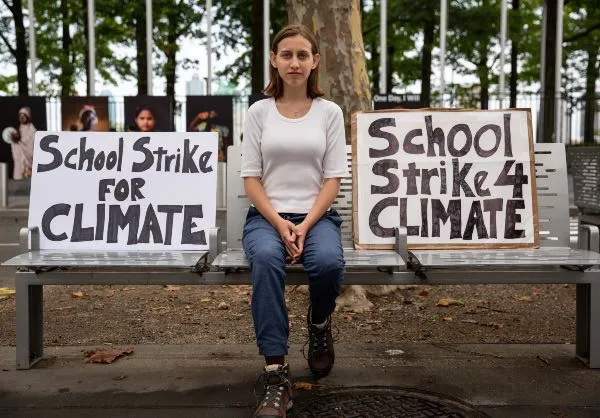
TEENAGER #6: ALEXANDRIA VILLASENOR: At 14 years old, Alexandria Villaseñor is a teenage environmentalist. Dedicated to climate activism, the teen is best known for her individual protests outside the U.N. on Fridays, when she skips school to sit on a park bench outside the building. Her strike began as a sign of solidarity with Greta Thunberg. She is involved with the U.S Youth Climate Strike movement. She is the founder of the Earth Uprising organizaztion with the purpose of fighting climate change. Her climate activism was inspired by the Camp Fire in California while she was visiting family there. This event inspired her to do research on the connection between climate change and wildfires and learned that wildfires are burning longer and hotter because of climate change. The other inspiration was Greta’s COP24 speech to which world leaders did not respond. This is what motivated heret begin her vigin outside the UN building in New York. She is also involved with Earth Uprising and ClimateStrikeSummer movements.
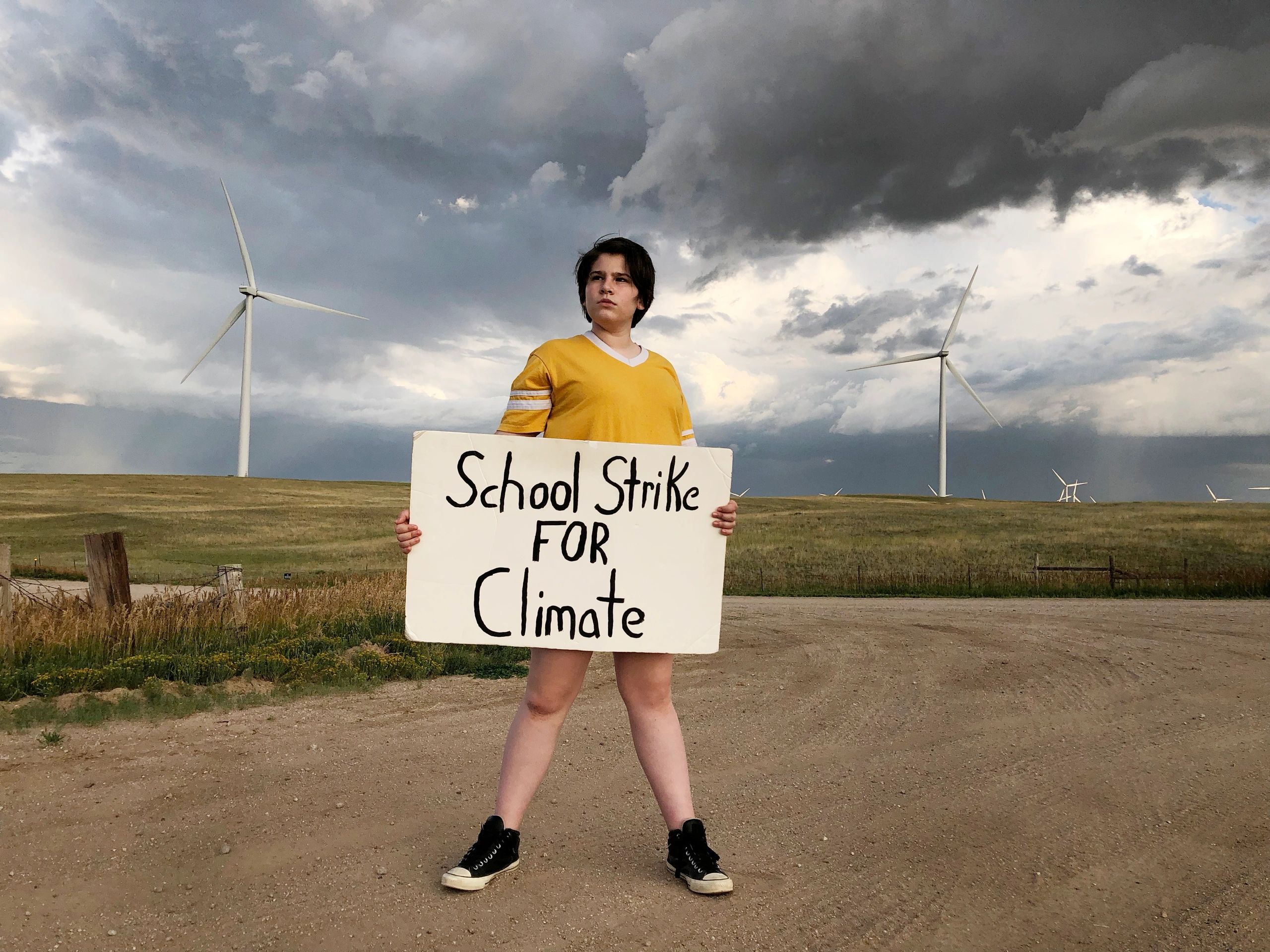
TEENAGER #7: HAVEN COLEMAN: At 13 : Haven was motivated by sloths because these creaters had been the subject of her enivornmental concerns in the context of deforestation. Deforestation connected her concern about sloths to climate and that is how she became a climate change activist. Sloths were the main motivator for Haven Coleman’s dive into environmental activism. A fifth grade lesson about deforestation was the catalyst for her commitment to ending climate change. I was so mad that we were making the world so sick and hurting so many people, killing so many people. I knew that it was not about saving the sloths, it was about saving all the organisms that live on earth. She started educating herself and her parents, and the kids at different schools by doing presentations. Then she started talking to politicians. Then she did speeches at rallies and events and became a full ffledged climate activist and eventually founded her own climate-focused organization. Her concern is that millions of people will be displaced, millions will starve, billions of plants, animals, and organisms will go extinct because of climate change. So much pain and suffering for all the things living on this earth, all made by us. This is a fight that will determine life and death for so many; this is a fight that is worth fighting for.

TEENAGER #8: XIUHTEZCATL MARTINEZ age19:
The youth director of Earth Guardians and author of the book We Rise, Xiuhtezcatl Martinez is an indigenous climate activist who is using his voice as both a hip-hop artist and environmentalist to guide a global, youth-led movement dedicated to protecting the earth. Now 19, Martinez began his activism at six years old, speaking at climate summits around the world. He’s even addressed the General Assembly at the U.N. and received the 2013 U.S. Community Service Award from President Barack Obama, all before age 20.
Martinez is perhaps best known for his lawsuit against the U.S. government. In Juliana vs. U.S., first filed in 2015, he argued that the federal government failed to limit the effects of climate change. Martinez has also worked locally to remove pesticides from public parks, contain coal ash, and place moratoriums on fracking in his home state, Colorado. In 2020, Martinez will be able to vote in his first presidential election. In an op-ed for Teen Vogue, he explained why he’ll be supporting Senator Bernie Sanders in the 2020 Democratic presidential primary.

TEENAGER #9: JAYDEN FOYTLIN, AGE 15
A member of Teen Vogue’s 21 Under 21 class of 2018, Jayden Foytlin has become a major player in the fight against global warming while still in high school. Foytlin, an indigenous and Cajun teen, is one of 21 people (including Martinez) suing the federal government in Juliana v. U.S. Along with her mother, Foytlin is also protesting the Bayou Bridge Pipeline, which would carry oil from the Dakota Access Pipeline into Louisiana, Foytlin’s home state.

HOW THE MEDIA PROMOTES THIS KIND OF CHILD ABUSE
BBC: LINK: https://www.bbc.com/news/science-environment-56941979 Carbon: How calls for climate justice are shaking the world, BBC Environment: Young activists are breathing new life into the long-running debate over climate justice – the framing of global warming as an ethical issue rather than a purely environmental one. When world leaders took to the stage at President Biden’s climate summit, they were given a gentle telling off by 19-year-old climate activist, Xiye Bastida. Solutions must be aligned with the fact that climate justice is social justice,” she said, echoing the words of Greta Thunberg. The Mexican-born teenager is among a new generation of climate activists drawing attention to environmental and social injustices they say are blighting lives worldwide. Her words cut through the noise in a video that has been viewed more than a quarter of a million times. For her, climate justice is about making sure we address historic injustices over emissions, including the carbon footprint of the wealthy, whose lifestyles have contributed most to global warming. At the same time, climate change is predominantly impacting those who’ve done the least to contribute to carbon pollution and who have the least resources to deal with it because they are living below the poverty line. Greta Thunberg said that we cannot separate social justice from climate justice. The starkest inequalities are seen in the poorest countries of the world, where people leaving only a tiny carbon footprint are at the front line of climate chaos, from floods to ruined crops. But even in wealthy countries like the UK, there are warnings of carbon inequality.
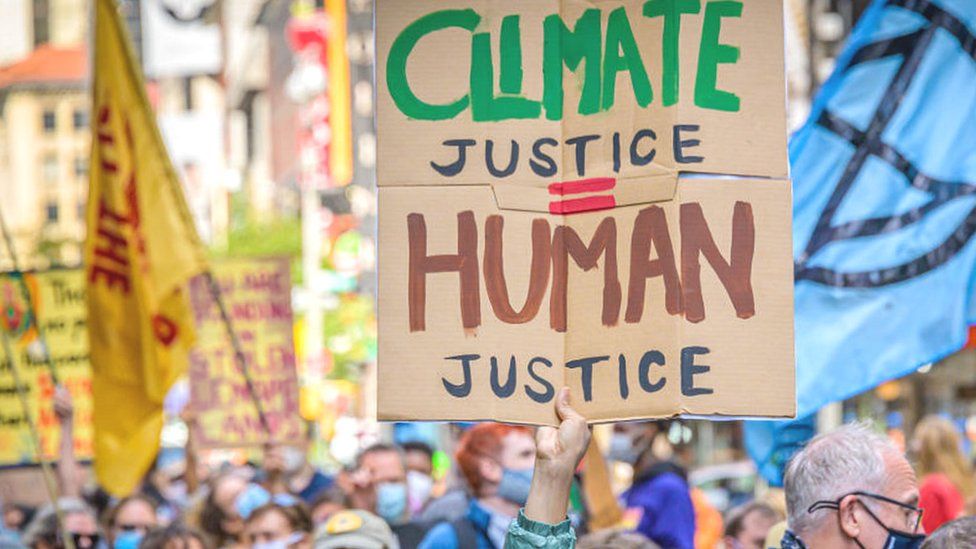
CRITICAL COMMENTARY
A common theme in the climate activism by teenage girls listed above is that, quite unlike climate science where the issue is that burning fossil fuels causes atmospheric CO2 to rise, the underlying issue in teenage activism is environmentalism. What’s more is that the environmentalism view of the teenagers is the Bambi-ism that humans are an unnatural and destructive force that threatens nature.
The Bambi issue in environmentalism is described in a related post on this site; LINK: https://tambonthongchai.com/2020/11/15/the-bambi-principle/

Here we propose that this environmentalism fear and fervor of the teenage girls derives from a corruption of the middle school curriculum in the age of tree hugger Bambi environmentalism where environmentalism has morphed from the idea that human welfare can be enhanced by humans managing their surroundings (“Environ” in French)to the Bambi-ism idea in Genesis that humans are the managers and caretakers of nature.
The basic middle school curriculum should focus preparing the students for high school with things like math, reading, writing, grammar, The middle school curriculum that used to be the basics that prepare students for high school and beyond in subjects such as grammar, history, mathematics, and the basics of the sciences that they need to study these subjects at the high school level. However, it appears that this basic idea of middle school education has been corrupted by environmentalism of the teachers and it is apparently a kind of environmentalism that can be described as “tree hugger” or “Bambi-ism” where humans are an evil and destructive force upon nature.

THE IMPRESSIONABLE YOUNG KIDS THAT EMERGE FROM MIDDLE SCHOOL THUS SCARED TO DEATH OF A HUMAN DESTRUCTION OF INNOCENT NATURE SCENARIO EASILY INTERPRET CLIMATE CHANGE IN THAT WAY AS HUMANS DESTROYING NATURE. THE ENVIRONMENTALISM INTERPRETATION OF CLIMATE CHANGE BY THESE KIDS AND THEIR DEVASATING FEAR OF CLIMATE CHANGE EXPRESSED BY THE KIDS IN THE SUMMARY ABOVE, ARE BEST UNDERSTOOD IN THIS CONTEXT. THE BOTTOM LINE IS THAT OUR EDUCATION SYSTEM HAS BECOME CORRUPTED BY THE ENVIRONMENTAL ACTIVISM OF TEACHERS SUCH THAT THE EFFECT IS BEST UNDERSTOOD AS CHILD ABUSE.

SWEDEN TOO
SOURCE: LINK: https://www.nbcnews.com/news/world/sweden-s-environmental-education-building-generation-greta-thunbergs-n1106876
Sweden’s environmental education is building a generation of Greta Thunbergs. It is creating green revolutionaries, that think in a specific way. That 17-year-old Greta Thunberg became the face of climate change action may have taken the world by surprise, but in Sweden, young people have long been champions of the environment. While Thunberg made her way to the United Nations climate talks in Madrid earlier this month, students at an elementary school in a suburb of Stockholm removed their sneakers and boots at the door before entering for the day, both for their comfort and to reduce the need for chemical floor cleaners that harm the environment. Caring for the environment is integrated into every aspect of the day for students at the Orminge Skola Elementary School, where bright classrooms are decorated with world maps and images of animals. Students scrape their leftover lunch off reusable dishes into a compost container, remove their shoes at the door before entering and learn about the impact of plastic pollution on oceans.
Liv Emfel, 11, says she can’t imagine that people don’t recycle their waste, having grown up learning to recycle at home and in school.Linda Givetash / NBC News “I have two different visions of the world. It’s either a beautiful world and we fixed everything and we saved the climate and the environment, or it’s just getting worse and we can’t do anything and everyone thinks they’re going to die because we didn’t do anything earlier,” said Liv Emfel, 11, who did not seem intimidated talking to journalists in English, which is not her native language. “I hope it’s going to be a beautiful world, but you can’t know, (so) you have to do something now (for it) to get better.” The environment — from ecology to conservation — has been an integral part of the Swedish curriculum since 1969. Teachers and education experts couldn’t pinpoint an event that sparked its adoption, but the relationship with nature has long been prominent in Swedish culture. “My family have recycled all of my life and (when) I heard that some people don’t, I thought it was weird,” Emfel said, before joining her class of fewer than 25 students. The country’s environmentally conscious culture is attributed by many to the fact that more than 80 percent of Swedes live within 3 miles of one of its 30 national parks, 4,000 nature reserves or many other conservation sites. Use of public lands for hiking, camping and other recreation is not only encouraged but is also a legislated right. Instead of being exceptional, Thunberg, who was named Time magazine’s Person of the Year 2019, reflects the culmination of decades of government educational policies, said Kajsa Holm, 26, a social science teacher at the Vårbyskolan Middle School in southwest Stockholm for children ages 10 to 16. “She is a representative of this generation. A lot of kids have the feeling that they need to change, that something needs to change. Lessons on the environment aren’t compressed into a single course but addressed across subjects, from science to home economics, and in every grade beginning in preschool. Given the breadth of the instruction, the interest and activism in environmentalism isn’t a surprise to teachers.

FOOTNOTE:
SEE ALSO: https://www.americanthinker.com/articles/2021/08/its_time_to_stop_terrorizing_our_children.html
WITH THANKS TO DALE LOWDERMILK FOR THIS LINK

ECO WACKO CLIMATE SCIENCE#1
Posted on: April 27, 2021

THIS POST IS A CRITICAL EVALUATION OF AN ONLINE ARTICLE ON HOW NATURE FIGHTS CLIMATE CHANGE
LINK TO SOURCE: https://www.washingtonpost.com/climate-solutions/2021/04/22/earth-day-biodiversity/

PART-1: WHAT THE SOURCE ARTICLE SAYS: Nature doesn’t only need us to save it
Spring has returned to the California coast, bringing with it abundant sunshine and calmer seas. Storm-tossed sands settle. Nourishing cold water floods in from offshore. It is time for a climate superhero to emerge. Giant kelp is among the best organisms on the planet for taking planet-warming gases out of the atmosphere. Buoyed by small, gas-filled bulbs called “bladders,” these huge algae grow toward the ocean surface at a pace of up to two feet per day. Their flexible stems and leafy blades form a dense underwater canopy that can store 20 times as much carbon as an equivalent expanse of terrestrial trees. And when the fierce waves of winter come and kelp is ripped from its rocky anchors and washed out to the deep sea, that carbon gets buried on the ocean floor. It may stay there for centuries, even millennia, locking away more greenhouse gases than 20 million American homes use in a year. Yet this powerful force for planetary protection is under siege.
Warming waters and worsening storms caused by climate change have weakened the kelp forests. Sewage and sediment spill onto them from cities on the shore. Most significantly, the demise of important predators such as otters and sea stars has led to an explosion in the population of sea urchins, which eat kelp. Huge swaths of underwater forest are being replaced by urchin “barrens” — denuded landscapes, desolate but for the spiky, spherical animals. Eventually, even the urchins start to starve. Humans have put our planet on a path to disaster. If people keep polluting at the current rate, scientists say, climate change will cause prolonged droughts, devastating storms, collapsing ecosystems and vanishing species. Coastal cities will be deluged by sea level rise; widespread food and water shortages will lead to the deaths of millions. To avoid this fate, civilization must rapidly transform — cutting carbon emissions 40 percent by 2030 and reaching “net zero” by the middle of the century. Earth itself is our greatest ally in this effort. Ecosystems like California’s kelp forests absorb about half of the greenhouse gases humans emit, studies show. Without them, warming would be even worse. Nature shields us from the worst consequences of our own actions, forgiving the sins we refuse to repent. But it cannot endure endless abuse. Life on Earth is threatened by overexploitation, pollution and habitat degradation, in addition to rising temperatures. The fraction of the planet that is undisturbed by human activities shrinks every year. If we hope to solve climate change, humanity must also address this biodiversity crisis — restoring ecosystems and the creatures that inhabit them. Otherwise, our species risks becoming like the sea urchins: agents of our own suffering. We humans are the looters of the only home we have.
THE ANSWER IS THAT WE HAVE TO REVITALIZE OUR ECOSYSTEMS. We must revitalize ecosystems: protect the ground they grow from back to he soft, spongy soil of an old-growth woodland where towering oak trees draw up water and nutrients via threadlike fungi attached to its roots. In exchange, the fungi take sugar from the oak, funneling carbon from the air into the ground. Now imagine a leaf from that oak drifting slowly to the forest floor. Perhaps it becomes food for an earthworm. Then microbes attack the earthworm’s droppings, breaking down the residue further still. Eventually, the carbon that was once a leaf can become trapped in clods of earth. Other atoms may form strong chemical bonds with minerals like iron, which prevents them from reacting with oxygen and returning to the air. Under the right conditions, carbon might stay locked away in dense, dark earth for centuries. Soils contain more carbon than the entire atmosphere and all the world’s plants combined. This makes soil both a ticking time bomb and an overlooked climate solution. As the world warms, the carbon contained in frozen Arctic peatlands is at risk of release. As people till the ground for agriculture and excavate land for development, any trapped carbon is unleashed into the air. At least a third of all soils on Earth have been degraded by human activities. And because soil is such an important reservoir. A small change in the release of that carbon can lead to a big change in the concentrations of greenhouse gases in the atmosphere. But soil can be rehabilitated, making it a carbon stockpile once more. Farmers can reduce or eliminate the practice of tilling which involves turning over the top layer of soil, displacing essential microbes and increasing erosion. By allowing fields to lie fallow, or planting cover crops, they can return nutrients to the soil. Adding carbon-rich materials such as compost or biochar (a form of charcoal produced by burning organic matter in an oxygen-free environment) can boost carbon storage and enhance soil health. A 2020 analysis in the journal Nature Sustainability found that better soil stewardship could reduce emissions by at least 5.5 gigatons of carbon dioxide each year — about 15 percent of current annual emissions. Once that happens it’s not just the carbon status of the soil that’s improved. The soil literally becomes softer. It holds more water and nutrients. It’s easier for plants to grow in and serve as a home for the most abundant and diverse group of organisms that we know of. Enhancing carbon in soils is just the beginning. In 2017, an international team of scientists set out to determine how much carbon the planet could pull out of the atmosphere, if humans would only give it a chance. In a study in the Proceedings of the National Academy of Sciences (PNAS), they concluded natural climate systems are capable of storing almost 24 gigatons of carbon dioxide per year — roughly two thirds of what people emit. About half of that sequestration would be cost-effective, meaning enacting the necessary protections would cost less than the consequences of keeping that carbon in the air.
Of the climate solutions they studied, few delivered more carbon bang per buck than mangroves — lush systems of salt-tolerant shrubs and trees that thrive where freshwater rivers spill into the sea. Though these forests occupy just 0.5 percent of Earth’s shorelines, they account for 10 percent of the coast’s carbon storage capacity. And they do more than just draw down carbon. With their luxuriant canopies and pillar-like roots extending deep into brackish water, mangroves provide shelter for small fish and help clean coasts. When storms strike a shoreline, they lessen the force of the waves. But the unique ecosystems are too often dismissed as unproductive swamps, good for no one but the mosquitoes. In the past half-century, more than a quarter of the world’s mangroves have been destroyed — drained for development, converted for shrimp farms, poisoned by fertilizer and drowned by dammed-up streams. Activists who seek to protect the mangroves have found themselves the target of harassment, lawsuits and physical violence. Human nature needs nature but we don’t see it, we don’t see how integrated we are. If we manage mangroves for making profits for the few at the cost of the many and the cost of our future,we’re killing ourselves.

CRITICAL COMMENTARY :
This article like many others like it is the evidence that the climate change movement has attracted activists of many colors including the eco wacko activists that provide us with views on climate change like the one quoted here.
The connection between climate science and eco wacko climate activism
The connection here is the carbon cycle with specific reference to photosynthesis and the sequestration of carbon dioxide in soils. In this context, the eco wackos claim that climate change is an environmentalism issue where human activity has interfered with nature’s ability to remove and sequester CO2. The environmentalism sin in this case is deforestation. It follows then that therefore the solution to climate change lies in the envornmentalism of humans backing off from their destruction of forests and adopting a more eco friendly lifestyle that will allow the forests to recover that will in turn increase CO2 sequestration in the soil.

This eco wacko science of climate change therefore presents the climate action needed as a more eco wacko relationship between humans and forests in which humans can take climate action simply by curtailing deforestation and by planting trees. This view, that planting trees is the climate action needed derives from the eco wacko view of the global warming issue described in the article quoted above. Here we present the available data for trees and photosynthesis and they show that this view of climate change and climate action is inconsistent with the data.
THE DATA ARE AS FOLLOWS
- THERE ARE 8.7E9 HECTARES OF LAND ON EARTH WHERE TREES CAN BE GROWN.
- OF THAT, 5.5E9 HECTARES ALREADY HAVE TREES.
- THIS MEANS THAT THE MAXIMUM PHOTOSYNTHESIS IMPACT OF HUMANS PLANTING TREES IS (8.7-5.5)/8.7 OR LESS THAN 37%. OF TOTAL LAND PHOTOSYNTHESIS.
- HOWEVER, 50% TO 80% OF THE WORLD’S PHOTOSYNTHESIS IS IN THE OCEAN. TAKING THE MIDPOINT OF THIS RANGE WE CAN SAY THAT ON AVERAGE THE OCEAN PROVIDES 65% OF PHOTOSYNTHESIS AND LAND ONLY 35%.
- THEREFORE, THE MAXIMUM HUMAN IMPACT OF PLANTING TREES IS TO INCREASE PHOTOSYNTHESIS BY 37% OF 35% OR ABOUT 13% AT MOST.
- THIS MAXIMUM POSSIBLE IMPACT OF HUMANS PLANTING TREES IS WELL WITHIN THE UNCERTAINTY RANGE OF GLOBAL PHOTOSYNTHESIS ESTIMATIONS.
- THEREFORE NO MEASURABLE OR STATISTICALLY SIGNIFICANT PHOTOSYNTHESIS EFFECT IS POSSIBLE BY HUMANS PLANTING TREES.

GLASGOW IS THE NEW COPENHAGEN
Posted on: April 26, 2021

THE STATE OF THE CLIMATE MOVEMENT IN 2009
AND THE VERY DRAMATIC COPENHAGEN COP15 THAT WAS “OUR LAST CHANCE” TO SAVE THE PLANET
AND “OUR DO OR DIE MOMENT” IN THE FIGHT AGAINST CLIMATE CHANGE.
THERE WERE SOME HEROIC MOMENTS IN COP15 2009 FOR THE UN AND FOR CLIMATE SCIENTISTS
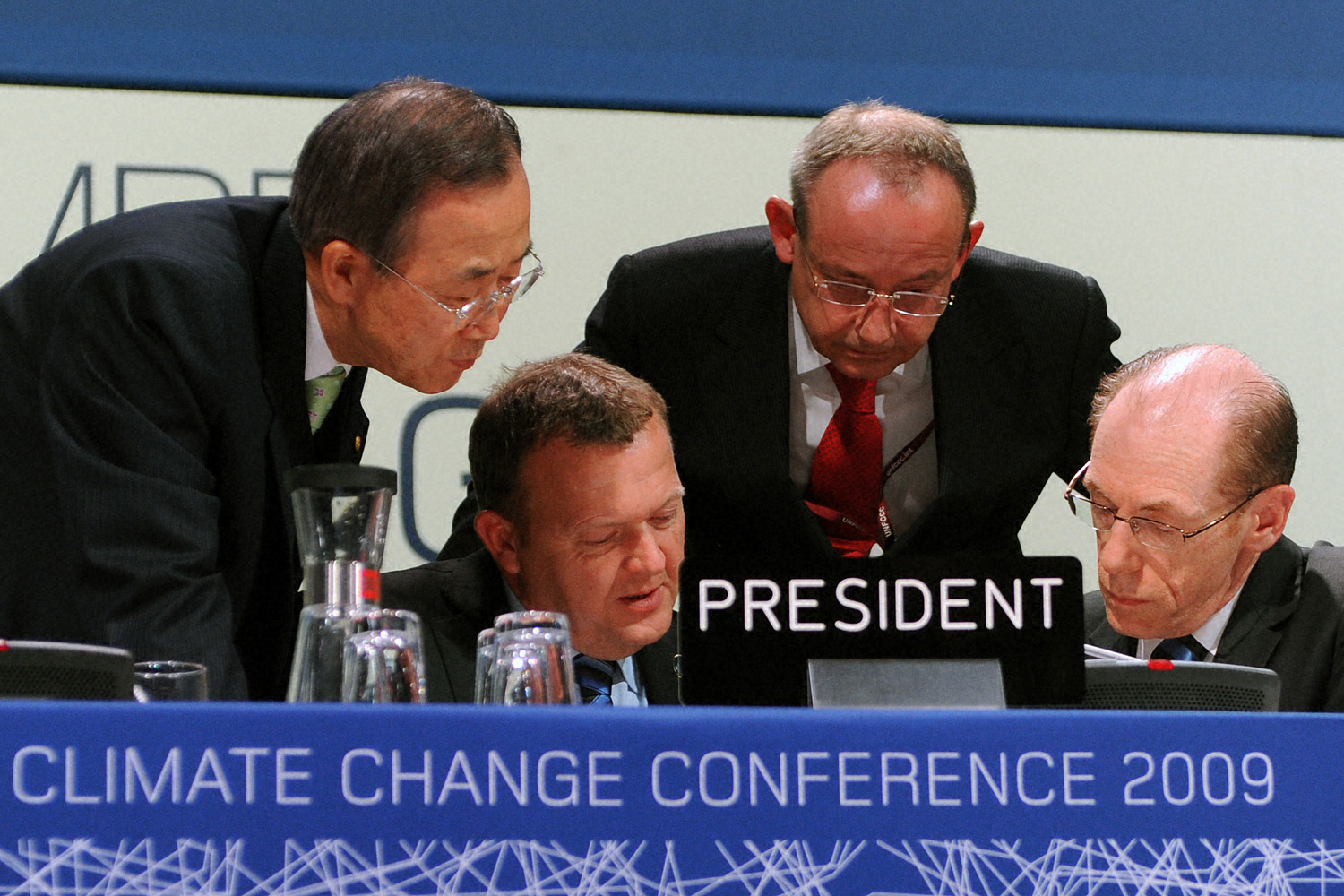
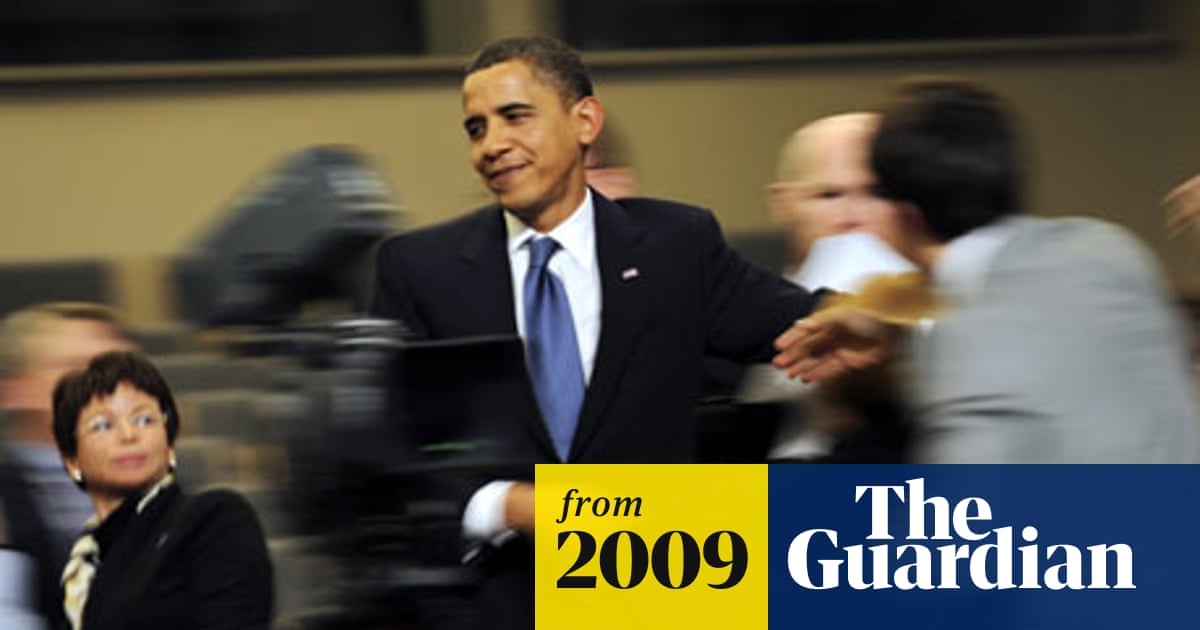

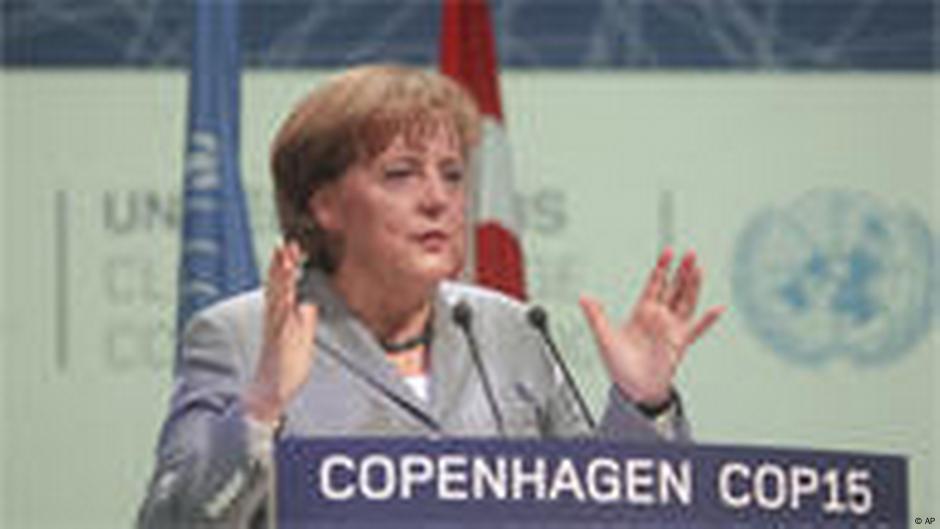
BUT IN THE END IT BOILED DOWN TO THIS
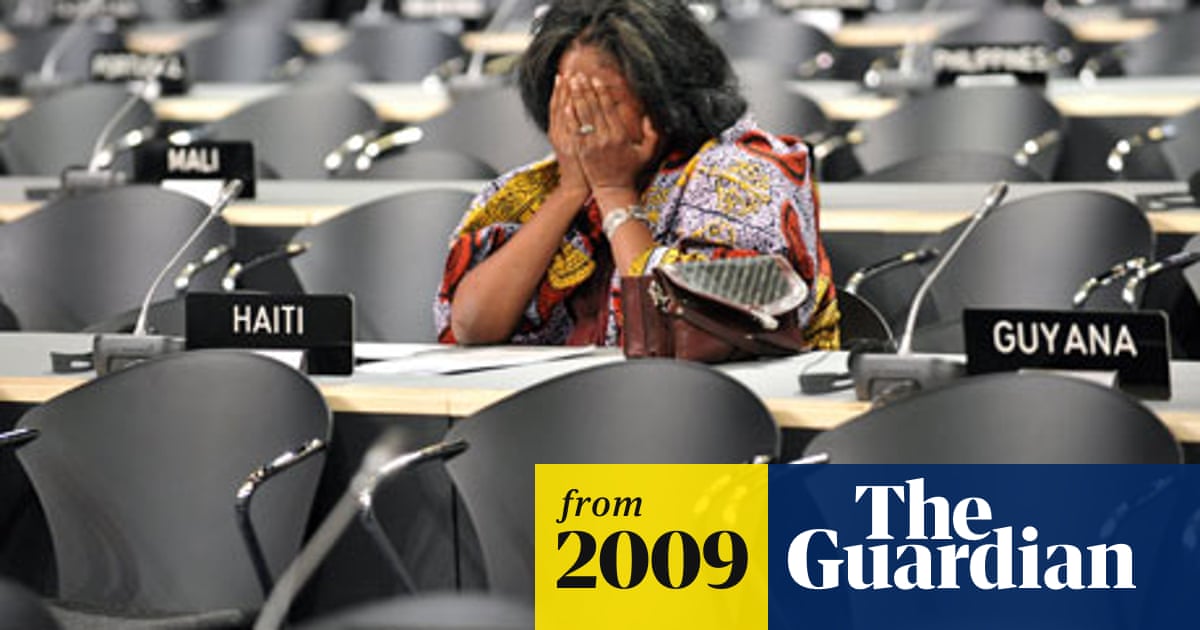


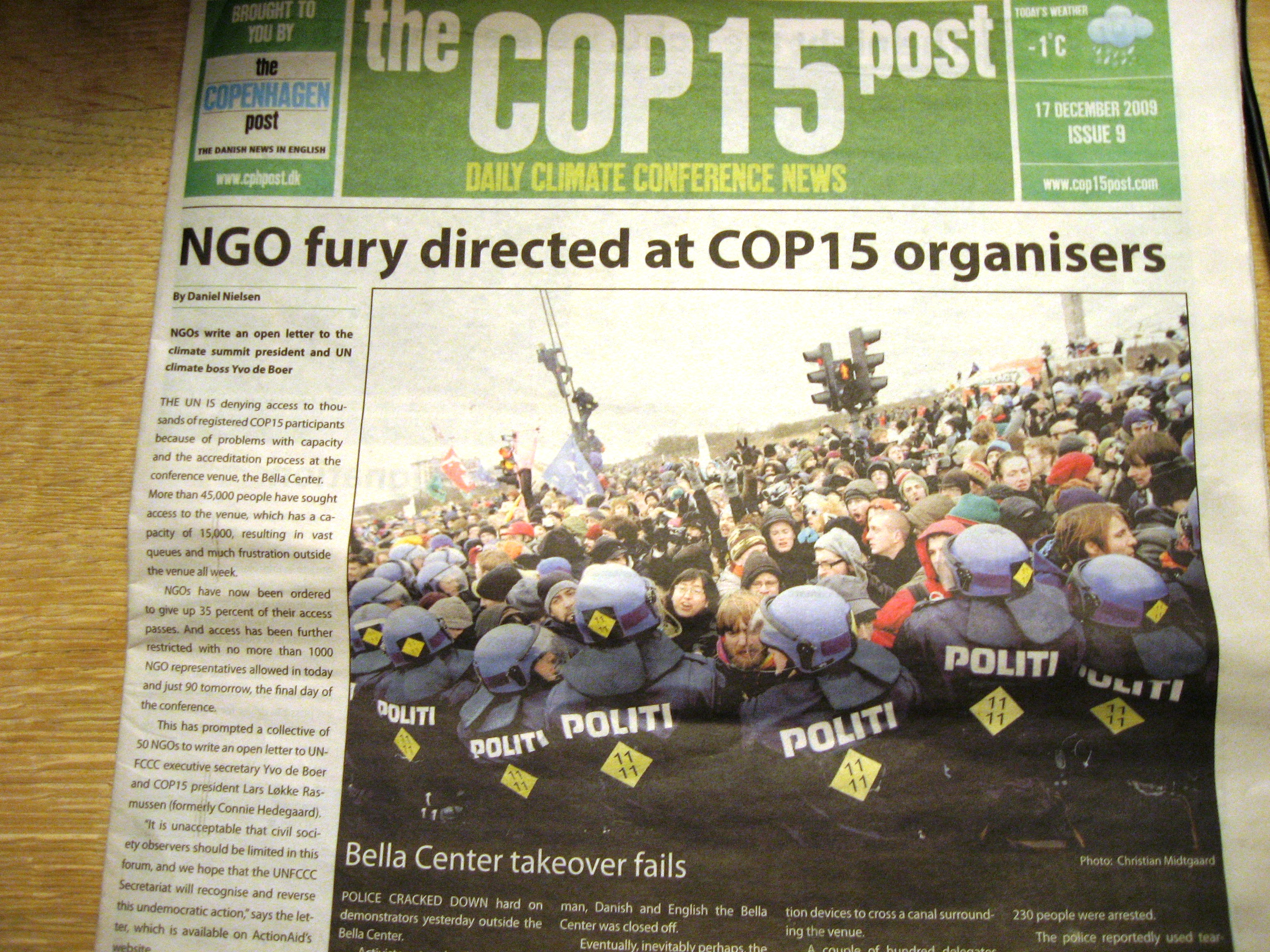

CONCLUSION: THE GLASGOW AFFAIR IS NOT SOMETHING NEW. IT IS THE CONTINUATION OF THE UN CLIMATE SOAP OPERA THAT WILL CONTINUE AS LONG AS WE KEEP GIVING THE UN THE MONEY THEY WANT TO SAVE US FROM THE CLIMATE.
THE KEY TO UNDERSTANDING COPS IS TO UNDERSTAND THE UN’S NEED FOR GLOBAL ENVIRONMENTAL CRISES. LINK: https://tambonthongchai.com/2020/03/18/the-eco-crisis-ambition-of-the-un/



LINK: https://papers.ssrn.com/sol3/papers.cfm?abstract_id=2794991
GEOLOGICAL CARBON FLOWS PART-3
Posted on: April 25, 2021

THIS POST IS THE THIRD POST ON DEEP SEA SOURCES OF CO2 EMISSIONS AND WITH A SPECIAL REFERENCE TO MEGAPLUMES. THE SOURCE ARTICLE IS: “DEEP SEA VOLCANISM CREATES MEGAPLUMES” PUBLISHED BY THE CONVERSATION; LINK TO SOURCE: https://theconversation.com/deep-sea-volcanic-eruptions-create-megaplumes-that-may-have-dispersed-early-life-159264 .THE REFERENCE ARTICLE IN TURN CITES A NEW RESEARCH PAPER FROM THE UNIVERSITY OF LEEDS BY AUTHORS DAVID FERGUSON AND SAM PEGLER.

PART-1: RELATED POSTS ON GEOLOGICAL CARBON FLOWS
GEOLOGICAL CARBON FLOWS #1: LINK: https://tambonthongchai.com/2019/08/27/carbonflows/
GEOLOGICAL CARBON FLOWS#2: LINK: https://tambonthongchai.com/2021/01/20/offshore-hydrocarbon-seeps/
SEISMIC ACTIVITY AND GLOBAL WARMING: LINNK: https://tambonthongchai.com/2020/12/08/seismic-activity-and-global-warming/
AN OCEAN ACIDIFICATION NIGHTMARE; https://tambonthongchai.com/2020/02/27/a-co2-nightmare-hydrothermal-vents/
CAN THE OCEAN ACIDIFY ITSELF? : LINK: https://tambonthongchai.com/2020/08/14/ocean-volcanism/
OCEAN HEAT CONTENT FROM HELL: https://tambonthongchai.com/2019/01/17/miocene/
PART-2: WHAT THE SOURCE ARTICLE SAYS
The ocean floor is famously unexplored and is imaged in much less detail than the surfaces of Mars, the Moon and Venus. Draining the water from the oceans would reveal THAT THE OCEAN FLOOR IS A VAST AND UNKNOWN LANDSCAPE OF INTENSE VOLCANISM WHERE MOST OF EARTH’S VOLCANIC ACTIV ITY OCCURS. The reason we don’t take that data into account in understanding surface phenomena is that detecting ocean floor volcanic eruptions is “extremely challenging”. Consequently, there remains much for scientists to learn about submarine volcanism and its role in the environment. Now our new study on deep-sea eruptions, published in Nature Communications, gives important insights. Scientists didn’t realise the true extent of oceanic volcanism until the 1950s, when they discovered the global mid-ocean ridge system. This finding was pivotal to the theory of plate tectonics. The network of volcanic ridges runs more than 60,000km around the globe. Subsequent exploration led to the detection of “black smoker” vents, where mineral-rich “hydrothermal” fluids (heated water in Earth’s crust) are ejected into the deep ocean. Driven by heat from the underlying magma, these systems influence the chemistry of the entire oceans. The vents also host “extremophiles” – organisms that survive in extreme environments that were once thought to be unable to sustain life.
But many questions remain. Data from submarine robotic vehicles show that tephra deposits are surprisingly common on the seafloor. Some marine organisms use this volcanic ash to construct their shells. These eruptions are probably driven not by steam (as in land volcanoes) but by expanding bubbles of carbon dioxide.
There are massive regions of hydrothermal fluid in the ocean above volcanic ridges called megaplumes, regions of heated, chemical-rich water of immense size and volume in excess of 100 cubic km (about 5km by 5km by 4km). Their origin is a mystery, meaning that our knowledge of seafloor carbon related activities is inadequate such that thiings like megplumes are a mystery and not something that will be taken into account by scientists in understanding the carbon flows. AUTHORS DAVID FERGUSON AND SAM PEGLER used a mathematical model to explain the dispersal of submarine tephra through the ocean. Thanks to detailed mapping of a volcanic ash deposit in the north-east Pacific, we know that this tephra can spread up to several kilometres from the site of an eruption. This kind of dispersion implies a high energy nature of megaplumes that initially rise upwards through the water before spreading out horizontally. The heat transfer required to drive this flow, and carry the tephra with it, is surprisingly large at around one terawatt (double that required to power the entire USA at once). We calculated that this should create plumes of a similar size that has indeed been measured. Their work provides good evidence that megaplumes are linked to active seafloor eruptions and that they form very rapidly, probably in a matter of hours. Megaplume creation is closely linked to seafloor eruptions and therefore their creation must have something to do with the emptying of reservoirs of hydrothermal fluids that are already present within the ocean crust. As magma forces its way upwards to feed seafloor eruptions, it can drive this hot 300°C fluid with it.
EXTREMOPHILES. Diverse microorganisms live in rocks below the surface under conditions we would not expect to support life. The real lesson of this discovery is that our land based ideas of conditions needed to support life are wrong. Life on earth is a more extensive and more complex pjenomenon than what we thought it was. The discovery that megaplumes come from the crust therefore explains the existence of bacteria within megaplumes. The rapid outpouring of fluids associated with megaplume formation may actually be the primary mechanism that disperses these microorganisms from their subterranean origin. If so, then deep-sea volcanic activity is an important factor influencing the geography of these extremophile communities.
The unusual physical and chemical conditions associated with seafloor hydrothermal systems may have provided a suitable environment for the origin of life on Earth. Megaplumes may therefore have been involved in spreading this life across the ocean.
PART-3: CONCLUSION
THE SIGNIFICANT GEOLOGICAL ENERGY AND CARBON FLOWS DESCRIBED ABOVE THAT ARE UNRELATED TO CLIMATE OR SURFACE PHENOMENA MAKE IT IMPOSSIBLE TO UNDERSTAND CHANGES IN ATMOSPHERIC OR OCEANIC CO2 CONCENTRATION PURELY AS ATMOSPHERIC PHENOMENA. CLIMATE SCIENCE CONTAINS AN ATMSPHERE BIAS AND A CLIMATE BIAS SUCH THAT ALL PHENOMENA ON EARTH ARE UNDERSTOOD IN THOSE TERMS.
RELATED POST ON ATMOSPHERE BIAS: LINK: https://tambonthongchai.com/2020/03/20/an-atmosphere-bias-part-2/

BIDEN CLIMATE SUMMIT
Posted on: April 23, 2021
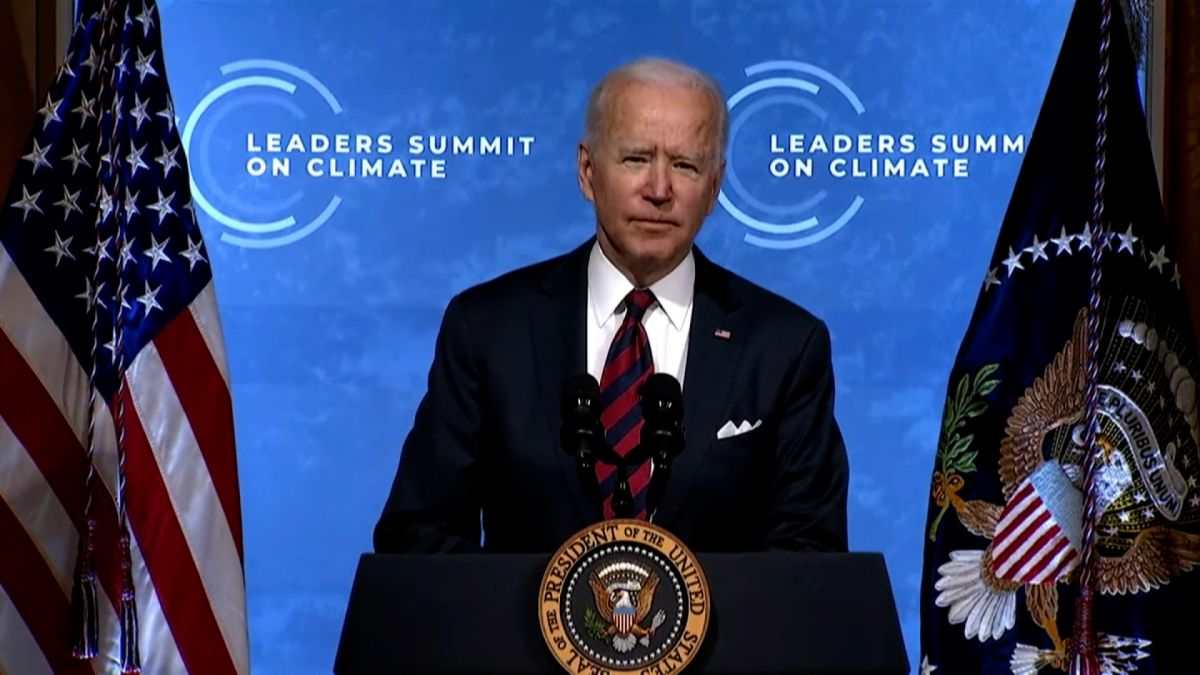
4/23/2021 BIDEN CLIMATE SUMMIT IN THE NEWS WHITE HOUSE MARCH 26 2021: Today, President Biden invited 40 world leaders to the Leaders Summit on Climate he will host on April 22 and 23. The virtual Leaders Summit will be live streamed for public viewing. President Biden took action his first day in office to return the United States to the Paris Agreement. Days later, on January 27, he announced that he would soon convene a leaders summit to galvanize efforts by the major economies to tackle the climate crisis.
The Leaders Summit on Climate will underscore the urgency – and the economic benefits – of stronger climate action. It will be a key milestone on the road to the United Nations Climate Change Conference (COP26) this November in Glasgow. In recent years, scientists have underscored the need to limit planetary warming to 1.5 degrees Celsius in order to stave off the worst impacts of climate change. A key goal of both the Leaders Summit and COP26 will be to catalyze efforts that keep that 1.5-degree goal within reach. The Summit will also highlight examples of how enhanced climate ambition will create good paying jobs, advance innovative technologies, and help vulnerable countries adapt to climate impacts. By the time of the Summit, the United States will announce an ambitious 2030 emissions target as its new Nationally Determined Contribution under the Paris Agreement. In his invitation, the President urged leaders to use the Summit as an opportunity to outline how their countries also will contribute to stronger climate ambition.
The Summit will reconvene the U.S.-led Major Economies Forum on Energy and Climate, which brings together 17 countries responsible for approximately 80 percent of global emissions and global GDP. The President also invited the heads of other countries that are demonstrating strong climate leadership, are especially vulnerable to climate impacts, or are charting innovative pathways to a net-zero economy. A small number of business and civil society leaders will also participate in the Summit. Key themes of the Summit will include: Galvanizing efforts by the world’s major economies to reduce emissions during this critical decade to keep a limit to warming of 1.5 degree Celsius within reach. Mobilizing public and private sector finance to drive the net-zero transition and to help vulnerable countries cope with climate impacts. The economic benefits of climate action, with a strong emphasis on job creation, and the importance of ensuring all communities and workers benefit from the transition to a new clean energy economy.
Spurring transformational technologies that can help reduce emissions and adapt to climate change, while also creating enormous new economic opportunities and building the industries of the future.
Showcasing subnational and non-state actors that are committed to green recovery and an equitable vision for limiting warming to 1.5 degree Celsius, and are working closely with national governments to advance ambition and resilience.
Discussing opportunities to strengthen capacity to protect lives and livelihoods from the impacts of climate change, address the global security challenges posed by climate change and the impact on readiness, and address the role of nature-based solutions in achieving net zero by 2050 goals. Further details on the Summit agenda, additional participants, media access, and public viewing will be provided in the coming weeks.

The countries invited by the President to the the Summit and their percent of world emissions (source: Wikipedia) show that the gathering represents 80.89% of the world’s fossil fuel emissions and that rather high percentage indicates that if a binding climate action carbon budget is implemented by this group it will be a significant achievement in emission reduction. Currently the rate of warming is 0.014C per year on average or 1.4C per century. An 80.89% reduction in this rate will reduce the rate of warming to 0.267 per century. This will be a significant achievement.
However, the language of the discussion at this stage in its progress is less impressive. For example, the USA commits to a 50% emission reduction by 2030 with no 100% reduction target. If we assume that the target is a 50% reduction by all the countries in the summit listed below, then a 40.445% reduction in the rate of warming will reduce the current rate of warming from 1.4C per century to 0.8338C per century.
Yet, although a significant group of countries and emissions are in the equation above, the countries in the meeting and in any emission reduction agreement that may be reached, what we have in this climate action club is 40 out of 195 counrties or 20.5% of the world’s countries. Some significant countries in terms of population and size of the economy that are not included are Pakistan, The Philippines, Iran, Thailand, Myanmar, Morocco, Angola, Mozambique, Yemen, Ghana, Nepal, Madagascar, Taiwan, Srii Lanka, Romania, Algeria, Greece, Portugal, Dominican Republic, Laos, Cambodia, Malaysia, Mongolia and a long list of other countries LINK: https://en.wikipedia.org/wiki/List_of_countries_by_population_(United_Nations)
In this context we note in a related post: LINK: https://tambonthongchai.com/2020/05/22/climate-catch22/ , that global warming is a global issue that has only a global solution to reduce and eliminate global fossil fuel emissions. The only way to do that is to put together a binding global agreement among all countries to reduce or eliminate global fossil fuel emissions as in the Montreal Protocol. There is no oppotunity here for national climate action heroism by a subset of the global economy. This is because the the global economy is a tightly interwoven and interdependent structure of national economies that are tied together by trade, as explained in more detail in the related post linked above. What we find in that analysis is that:
THE ECONOMICS TRAP OF A NON-GLOBAL MOVEMENT TO CUT GLOBAL EMISSIONS: Although the world of humans is separated into nation states, they are connected by economics. This connection is vast and complex and involves cross border investments, stocks, bonds, monetary policy, technology, intellectual property rights, and so on and so forth but most importantly in this respect, the nations of the world are connected by trade. International trade is so important, that even though we think of our civilization in terms of the nation states, we are really one huge global economy because we are connected by trade.
THE ANOMALY OF NON-GLOBAL EMISSION REDUCTION PLANS IN THE CONTEXT OF TRADE: Because nation states are independent nations in some respects but global in terms of trade, a climate action decision by an individual nation state will not lead to global emission reduction. This is because any national climate action plan by a single nation state will increase the economic cost of production and make that nation state less competitive in international trade and hand over a cost advantage to nations that do not have a national climate action plan. The cost advantage of non-climate-action takers will cause their production and exports to rise by virtue of demand from climate action taking nations. The net result will be that economic activity {and fossil fuel emissions} will decline in climate action taking nations but with a corresponding rise in economic activity {and fossil fuel emissions} in non-climate-action taking nations. In the net there may be no emission reduction. This is the Catch-22 of national level emission reduction plans.
This means that an emission reduction contract among nations that is less than global will not reduce global emissions because any emission reduction thus achieved among a sub group of countries will be offset by increases in emissions elsewhere outside the emission reduction compact of the sub group of emission reduction countries. Therefore, any emission reduction that may be achived by a contract among the 40 countries of the Biden climate club will be offset by increases in emissions outside of this group. In the net there will be no reduction in gobal fossil fuel emissions.
The data for the failure of climate heroism at the nation state level is presented in related posts on this site.
LINK#1: https://tambonthongchai.com/2021/02/23/renewable-energy-statistics/
LINK#2: https://tambonthongchai.com/2020/02/25/net-zero/
LINK#3: https://tambonthongchai.com/2019/09/30/cer/
As noted in the documents in LINK#2 and LINK#3 above, a specific issue in the corruption of climate action after the failure of the UN to deliver a “Montreal Protocol for Climate Change“, [LINK: https://tambonthongchai.com/2021/01/04/a-montreal-protocol-for-the-climate/ is the interpretation of reduction in fossil fuel emissions in terms of investments in carbon cycle offsets or carbon credit offsets in the carbon credits market with the view that what needs to be zero is not emissions but something called “net emissions” in which fossil fuel emissions equivalent to the carbon credits held are allowed. The flaw in this logic is presented in the documents linked by LINK#1 and LINK#2 above.

TO SUMMARIZE, THOUGH THE MEETING OF 40 NATIONS FOR A CLIMATE ACTION CONTRACT MAY SOUND ENCOURAGING FOR CLIMATE ACTION THERE IS A CERTAIN AMOUNT OF DRAMA IN THIS EVENT THAT ARE IRRELEVANT IN TERMS OF CLIMATE ACTION. THESE ARE (1) COUNTRIES SUCH AS JAMAICA, BHUTAN, AND ANTIGUA AND BARBUDA ARE IRRELEVANT IN THE CLIMATE ACTION CONTEXT. IF WE COUNT ONLY COUNTRIES WITH EMISSIONS OF 1% OF GLOBAL EMISSIONS OR GREATER, WE HAVE ABOUT 20 COUNTRIES IN THE PACT. THE INCLUSION OF THE HEAVY WEIGHTS SUCH AS USA, CHINA, AND INDIA OF COURSE YIELDS A SIGNIFICANT PERCENTAGE OF WORLD EMISSIONS REPRESENTED IN THE MEETING AT ALMOST 81%. HOWEVER, BECAUSE IT IS NOT A GLOBAL CONTRACT, THE CLIMATE HEROISM OF THIS GROUP WILL BE UNDONE BY THE ECONOMICS TRAP DESCRIBED IN LINK#1 ABOVE.
NON-GLOBAL CLIMATE ACTION HEROISM IS POLITICS NOT CLIMATE ACTION.

LIST OF PARTCIPATING COUNTRIES AND THEIR 2019 EMISSIONS AS PERCENT OF GLOBAL EMISSIONS
ANTIGUA AND BARBUDA: 0%, ARGENTINA: 0.57%, AUSTRALIA: 1.08%, BANGLADESH: 0.23%, BHUTAN: 0%, BRAZIL: 1.33%, CANADA: 1.66%, CHILE: 0.24%, CHINA: 29.34%, COLOMBIA: 0.2%, DEMOCRATIC REPUBLIC OF THE CONGO 0.01%, DENMARK 0.09%, EURPOEAN UNION 9.57%, FRANCE 0.91%, GABON 0.02%, GERMANY 2.15%, INDIA 6.62%, INDONESIA 1.38%, ISRAEL 0.18%, ITALY 0.97%, JAMAICA 0.02%, JAPAN 3.56%, KENYA 0.05%, MARSHALL ISLANDS 0%, MEXICO 1.37%, NEW ZEALAND 0.1%, NIGERIA 0.26%, NORWAY 0.14%, POLAND 0.86%, KOREA 1.82%, RUSSIA 4.76%, SAUDI ARABIA 1.72%, SINGAPORE 0.15%, SOUTH AFRICA 1.26%, SPAIN 0.76%, TURKEY 1.16%, UNITED ARAB, EMIRATES 0.55%, UNITED KINGDOM 1.02%, USA 13.77%, VIETNAM 0.59%, TOTAL: 80.89%, (note: since many EU countries are listed, the percentage for the EU was not added).
Prime Minister Gaston Browne,
President Alberto Fernandez, Argentina
Prime Minister Scott Morrison, Australia
Prime Minister Sheikh Hasina, Bangladesh
Prime Minister Lotay Tshering, Bhutan
President Jair Bolsonaro, Brazil
Prime Minister Justin Trudeau, Canada
President Sebastián Piñera, Chile
President Xi Jinping, People’s Republic of China
President Iván Duque Márquez, Colombia
President Félix Tshisekedi, Democratic Republic of the Congo
Prime Minister Mette Frederiksen, Denmark
President Ursula von der Leyen, European Commission
President Charles Michel, European Council
President Emmanuel Macron, France
President Ali Bongo Ondimba, Gabon
Chancellor Angela Merkel, Germany
Prime Minister Narendra Modi, India
President Joko Widodo, Indonesia
Prime Minister Benjamin Netanyahu, Israel
Prime Minister Mario Draghi, Italy
Prime Minister Andrew Holness, Jamaica
Prime Minister Yoshihide Suga, Japan
President Uhuru Kenyatta, Kenya
President David Kabua, Republic of the Marshall Islands
President Andrés Manuel López Obrador, Mexico
Prime Minister Jacinda Ardern, New Zealand
President Muhammadu Buhari, Nigeria
Prime Minister Erna Solberg, Norway
President Andrzej Duda, Poland
President Moon Jae-in, Republic of Korea
President Vladimir Putin, The Russian Federation
King Salman bin Abdulaziz Al Saud, Kingdom of Saudi Arabia
Prime Minister Lee Hsien Loong, Singapore
President Matamela Cyril Ramaphosa, South Africa
Prime Minister Pedro Sánchez, Spain
President Recep Tayyip Erdoğan, Turkey
President Sheikh Khalifa bin Zayed Al Nahyan, United Arab Emirates
Prime Minister Boris Johnson, United Kingdom
President Nguyễn Phú Trọng, Vietnam


THIS POST IS A BRIEF PRESENTATION OF CLIMATE SCIENCE NEWS FOUND IN MY INBOX ON APRIL 22, 2021
ITEM#1: Total immersion: re-imagining the ocean: LINK: https://www.nature.com/articles/d41586-019-03050-0
WHAT THE ARTCLE SAYS: On a calm day, the ocean can resemble a vast mirror. The ocean is “an ideal screen for human projections of fear and hope. Humanity’s fundamental ignorance about the sea has often fed fantastical ideas of it as saviour, battlefield, playground, storehouse, angry beast or hapless victim. We have struggled to see Earth’s oceanic reaches for what they truly are: the face of our changing planet. That recognition of a rapidly, irreversibly altering ocean permeates. Oh! the splendour, complexity and vulnerability of coral reefs. There is a sense of urgency about the ocean’s perilous state but with the hope that we have reached a turning point in our relationship with the ocean. Scientific inquiry into the ocean began 200 years ago, and the findings coalesced into an interdisciplinary field called Oceanography. International collaboration in research is needed because the ocean is a common good. Of particular resonance is the transformation in our understanding of oceanic limits with the ocean seen as an inexhaustible, boundless resource. Earth’s ocean ecosystems are now recognized as fragile and in decline. More than 90% of fish stocks are fully or overexploited, and climate change is compromising the ocean’s oxygen supply and productivity. Nothing else will matter if we fail to protect the ocean. The ocean of the Anthropocene is in the geological epoch that marks humanity’s dominant impact on planet Earth and the slow disintegration of coral reefs from the combined impacts of pollution, habitat destruction, overfishing and ocean warming. Coral reefs are a canary in the coal mine threatened by the the transformative effects of climate change and other human stressors on oceans. Reefs cannot be climate-proofed and they can’t hide from climate change. Without drastic emissions reductions, we are indeed facing a world without coral. The battered and bleached reefs are like ailing parents gradually robbed of mobility, independence and dignity.
This is a valuable reminder that we are at a crossroads in our collective relationship with the ocean. Think about what the ocean does for us in regulating Earth’s climate with heat absorption and carbon sequestration. Human impact is disrupting ocean systems and threatening ocean life. We must allow marine ecosystems to recover with sustainable development. The ocean is not too big to fail, nor is it too big to fix. It is too big to ignore.

CRITICAL COMMENTARY
The weight of the ocean is 1.4E21 kg or 1.4E18 tonnes. The 7.8E9 humans on earth with an average weight of 62.5 kg is 287E6 tonnes or 0.00000007% of the ocean. The weight of all the things that humans have built is 1.1E12 tonnes. This means that the weight of the ocean is about a million times the combined weight of all the humans and the weight of all the things that humans have built.
That the ocean is threatened by humans or that the environmentalism of the humans can include the ocean is nonsensical in view of its immense size and complexity and the relative insignificance of humans and their technological and industrial civilization.
The other issue here is that we don’t really know the ocean. It is a huge place that we are only begining to study at depth. That humans are an ecological threat to the ocean and that humans are able and obligated to take care of the ocean tells us more about the human ego than useful information about the ocean or about ocean ecology. In terms of their ecological impact, the humans have over estimated themselves. We are too small and insiginficant to have the kind of impact imagined by the eco wacko worrywarts who must be running out of real impacts to worry about.
What makes the ocean worrywartism even more ridiculous is that we don’t really know the ocean. We are now in the year 2021, just beginning to study the ocean at sufficient depth the make the kind of assessments about human impacts on the ocean that has been assumed by the egotistical humans.
AS FOR A ROLE OF HUMANS AS CARETAKERS OF THE PLANET: We describe the relative insignificance of humans on a planetary scale in a related post: LINK: https://tambonthongchai.com/2020/03/30/the-humans-must-save-the-planet/ where we find as follows:

The crust of the planet where we live is an insignificant portion of the planet. Life on earth is an insignificant portion of the crust of the planet. Humans are an insignificant portion of life on earth.
Although it is true that humans must take care of their environment, we propose that the environment should have a more rational definition because the mass balance above does not show that humans are a significant force on a planetary scale or that they are in a position to either save it or to destroy it even with the much feared power of their fossil fueled industrial economy.
And that implies that it is not possible that there is such a thing as an Anthropocene in which humans are the dominant geological force of the planet.
Like ants and bees, humans are social creatures that live in communities of humans so that when they look around all they see are humans. This is the likely source of our human oriented view of the world. Paul Ehrlich’s overpopulation theory is derived from his first visit to India which he described as “people people people people people!” It is this biased view of the planet that makes it possible for us to extrapolate Calcutta to the planet and come up with the fearful image described by Jeff Gibbs as “Have you every wondered what would happen if a single species took over an entire planet?”


RELATED POST#1: THE PLASTIC POLLUTION ISSUE:
LINK#1: https://tambonthongchai.com/2020/12/24/plastic-pollution-2/

RELATED POSTS #2 AND #3: THE OVER FISHING ISSUE
LINK#2: https://tambonthongchai.com/2018/05/23/fishing-for-climate-calamity/
LINK#3: https://tambonthongchai.com/2010/05/19/oceans-running-out-of-fish/

CLIMATE NEWS 4/16/2021
Posted on: April 16, 2021

CLIMATE NEWS ARTICLE#1
A 1,000 km Long River May Be Flowing Deep Below Greenland’s Ice Sheet.
LINK TO SOURCE: https://scitechdaily.com/a-1000-km-long-river-may-be-flowing-deep-below-greenlands-ice-sheet/
WHAT THE ARTICLE SAYS:
Computational models suggest that melting water originating in the deep interior of Greenland could flow the entire length of a subglacial valley and exit at Petermann Fjord, along the northern coast of the island. Updating ice sheet models with this open valley could provide additional insight for future climate change predictions. Radar surveys have previously mapped Greenland’s bedrock buried beneath two to three thousand meters of ice. Mathematical models were used to fill in the gaps in survey data and infer bedrock depths. The surveys revealed the long valley, but suggested it was segmented, preventing water from flowing freely through it. However, the peaks breaking the valley into segments only show up in areas where the mathematical modeling was used to fill in missing data, so could not be real. Christopher Chambers and Ralf Greve, scientists at Hokkaido University’s Institute of Low Temperature Science, wanted to explore what might happen if the valley is open and melting increases at an area deep in Greenland’s interior known for melting. Collaborating with researchers at the University of Oslo, they ran numerous simulations to compare water dynamics in northern Greenland with and without valley segmentation. The results, recently published in The Cryosphere, show a dramatic change in how water melting at the base of the ice sheet would flow, if the valley is indeed open. A distinct subglacial watercourse runs all the way from the melting site to Petermann Fjord, which is located more than 1,000 kilometers away on the northern coast of Greenland. The watercourse only appears when valley segmentation is removed; there are no other major changes to the landscape or water dynamics. “The results are consistent with a long subglacial river, but considerable uncertainty remains. For example, we don’t know how much water, if any, is available to flow along the valley, and if it does indeed exit at Petermann Fjord or is refrozen, or escapes the valley, along the way. If water is flowing, the model suggests it could traverse the whole length of the valley because the valley is relatively flat, similar to a riverbed. This suggests no parts of the ice sheet form a physical blockade. The simulations also suggested that there was more water flow towards the fjord with a level valley base set at 500 meters below sea level than when set at 100 meters below. In addition, when melting is increased only in the deep interior at a known region of basal melting, the simulated discharge is increased down the entire length of the valley only when the valley is unblocked. This suggests that a quite finely tuned relationship between the valley form and overlying ice can allow a very long down-valley water pathway to develop. “Additional radar surveys are needed to confirm the simulations are accurate,” says Greve, who has been developing the model used in the study, called Simulation Code for Polythermal Ice Sheets (SICOPOLIS). “This could introduce a fundamentally different hydrological system for the Greenland ice sheet. The correct simulation of such a long subglacial hydrological system could be important for accurate future ice sheet simulations under a changing climate. Reference: “Possible impacts of a 1000 km long hypothetical subglacial river valley towards Petermann Glacier in northern Greenland” by Christopher Chambers, Ralf Greve, Bas Altena and Pierre-Marie Lefeuvre, 12 November 2020, The Cryosphere. DOI: 10.5194/tc-14-3747-2020.
RESPONSE:
SIGNIFICANT GEOLOGICAL ACTIVITY UNDERNEATH GREENLAND HAS BEEN IGNORED BY CLIMATE SCIENCE IN A SIMPLISTIC AND ACTIVISM DRIVEN UNDERSTANDING OF ALL GREENLAND ICE MELT EVENTS AS ATMOSPHERIC PHENOMENA DRIVEN BY FOSSIL FUELED GLOBAL WARMING THAT CAN THEREFORE BE ATTENUATED BY THE CLIMATE ACTION DEMANDED IN TERMS OF OVERHAULING THE WORLD’S ENERGY INFRASTRUCTURE FROM FOSSIL FUELS TO RENEWABLES. THIS IS HOW ACTIVISM CORRUPTS SCIENCE.
LINKS TO RELATED POSTS ON THIS SITE:
LINK#1: https://tambonthongchai.com/2021/02/27/geological-features-of-the-arctic/
LINK#2: https://tambonthongchai.com/2020/12/08/the-arctic-ocean-warms-from-below/
LINK#3; https://tambonthongchai.com/2020/10/30/the-greenland-iceland-mantle-plume/
LINK#4: https://tambonthongchai.com/2020/11/07/climate-change-threatens-polar-ice/
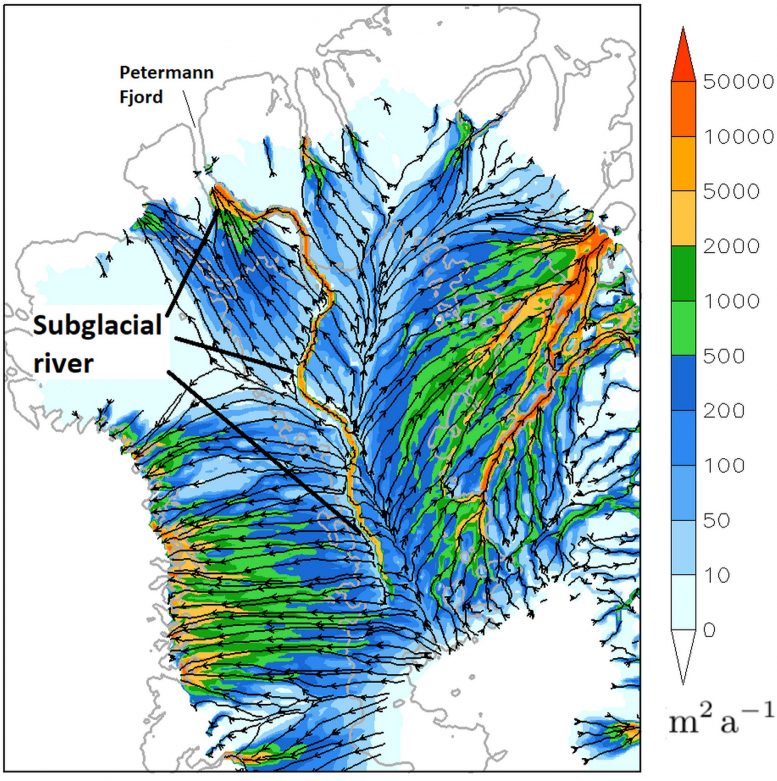
CLIMATE NEWS ARTICLE#2
The Ocean’s Swirling Currents Are Migrating Poleward: OMG! OMG!
LINK: https://www.scientificamerican.com/article/the-oceans-swirling-currents-are-migrating-poleward/
WHAT THE ARTICLE SAYS:
Enormous, swirling gyres compose some of the world’s biggest and most important ocean currents. Found in the North and South Pacific, the North and South Atlantic, and the Indian Ocean, these massive, rotating currents help transport heat and nutrients around the globe. Now, new research suggests, they seem to be on the move. OMG! OMG! A recent study, conducted by scientists from the Alfred Wegener Institute in Germany and the Ocean University of China, finds major ocean gyres are steadily creeping toward the poles. Since the 1980s, they’ve been migrating by about a half mile each year. It’s already causing noticeable consequences, the researchers suggest. For one thing, ocean gyres tend to alter the sea levels around them. Scientists have already observed a distinct band of higher-than-average sea levels in the midlatitudes, including along much of the U.S. East Coast, a phenomenon some experts have chalked up to regional warming patterns and related changes in the structure of the ocean. But the new study suggests the movement of ocean gyres may also be playing a role. Gyres also help control the flow of heat and nutrients through the ocean. As they move, they can alter ocean ecosystems, affect certain fisheries and influence weather patterns. The study suggests the movement of gyres may already be linked to recent observed changes in the movement of hurricanes and the behavior of major atmospheric currents, like the jet streams. The exact causes of the migration are difficult to pin down. But the new study suggests climate change is at least partly to blame. The researchers examined satellite data on sea surface heights and temperatures from the 1980s through the present. Ocean gyres tend to have distinct sea levels and water temperatures compared with their surroundings, so they can be geographically identified using these kinds of measurements. The data suggests that the gyres have been steadily moving toward the poles for the last four decades. But not all of the trends are statistically significant, particularly for gyres in the Northern Hemisphere—in other words, statistical analyses suggest that the migration could be the product of natural climate variations. But climate model simulations would seem to suggest otherwise. The researchers ran two sets of simulations, one implying a world without climate change and one incorporating the influence of historical greenhouse gas emissions. In the simulations incorporating climate change, ocean gyres crept toward the poles, just as they do in the satellite record. This suggests that climate change at least has had a hand in the phenomenon. If global warming is indeed the culprit, then these kinds of poleward shifts might be expected to continue in the coming decades, with potentially “broad environmental and societal impacts,”

RESPONSE: THIS IS THE NULL HYPOTHESIS ISSUE IN CLIMATE SCIENCE DESCRIBED MORE FULLY IN THE RELATED POSTS BELOW. IN REAL SCIENCE, THAT WHICH IS TO BE PROVEN IS THE ALTERNATE HYPOTHESIS AND ITS NEGATION IS THE NULL HYPOTHESIS. THIS MEANS THAT IN HYPOTHESIS TESTS, SUFFICENT AND CONVINCING UNBIASED EVIDENCE MUST BE PROVIDED TO REJECT THE NULL HYPOTHESIS TO ACCEPT THE ALTERNATE HYPOTHESIS AND UNTIL THEN, THE NEGATION OR DENIAL OF THE PROPOSITION STANDS. THIS PROCEDURE IS NOT FOLLOWED IN CLIMATE SCIENCE WHERE THAT WHICH IS TO BE PROVEN IS THE NULL HYPOTHESIS AND IT STANDS AS TRUTH UNTIL DENIERS CAN PROVIDE SUFFICIENT EVIDENCE AGAINST IT. THIS KIND OF RESEARCH CANNOT BE CLAIMED TO BE SCIENCE. AS IN THE PERVERSE INTERPRETATION OF UNCERTAINTY IN CLIMATE SCIENCE, THE NULL HYPOTHESIS ISSUE IS ALSO EVIDENCE OF CONFIRMATION BIAS IN CLIMATE CHANGE RESEARCH. THESE METHODOLOGICAL ERRORS MAKE IT IMPOSSIBLE TO CLAIM THESE KINDS OF FINDINGS AS SCIENTIFIC EVIDENCE.
LINKS TO RELATED POSTS ON THIS SITE
LINK#1: https://tambonthongchai.com/2021/04/05/the-null-hypothesis-issue/
LINK#2: https://tambonthongchai.com/2020/04/22/climate-science-uncertainty/
LINK#3: https://tambonthongchai.com/2018/08/03/confirmationbias/

CLIMATE NEWS ARTICLE#3:
Google Earth’s historical 3D time lapses show the ravages of climate change
LINK: https://www.theverge.com/2021/4/15/22383964/google-earth-3d-timelapse-climate-change
WHAT THE ARTICLE SAYS
Google Earth’s 3D time-lapse feature lets you observe how Earth has changed from 1984 to 2020, allowing you to see just how much the devastating effects of climate change have already shaped the geography of the planet. It’s best for a landscape view of our world. It’s not about zooming in. It’s about zooming out. It’s about taking the big step back. We need to see how our only home is doing. The Timelapse feature will be available starting Thursday. To access it, launch Google Earth and then click or tap on the Voyager tab and search for a place of interest or take a “guided tour” about forest change, urban growth, warming temperatures, mining and renewable energy sources, and the Earth’s fragile beauty. Example below presented as a GIF image.
/cdn.vox-cdn.com/uploads/chorus_asset/file/22445668/Columbia_Glacier___Timelapse_in_Google_Earth.gif)
RESPONSE: HERE WE FIND YET ANOTHER DEMONSTRATION OF THE ACTIVISM DRIVEN NULL HYPOTHESIS BIAS IN CLIMATE SCIENCE DESCRIBED IN THE PREVIOUS EXAMPLE. THE SAME RELATED POSTS ALSO APPLY HERE AND THEY ARE REPRODUCED BELOW FOR CONVENIENCE.
LINKS TO RELATED POSTS ON THIS SITE
LINK#1: https://tambonthongchai.com/2021/04/05/the-null-hypothesis-issue/
LINK#2: https://tambonthongchai.com/2020/04/22/climate-science-uncertainty/
LINK#3: https://tambonthongchai.com/2018/08/03/confirmationbias/


WHAT THESE ARTICLES SHOW IS THAT CLIMATE SCIENCE IS MORE SUPERSTITION THAN SCIENCE.
POSTSCRIPT: THE NULL HYPOTHESIS ERROR AND ITS CONFIRMATION BIAS IN CLIMATE SCIENCE BOILS DOWN TO THIS. (1) LOOK THROUGH THE DATA IN THE EARTH’S HISTORY TO FIND SOMETHING THAT HAS CHANGED. (2) FIND A WAY TO PRESENT THESE CHANGES AS A DANGER. (3) CLAIM THE CHANGES FOUND AS IMPACTS OF CLIMATE CHANGE WITH THE LOGIC “WHAT ELSE COULD IT BE?”. THEN(4) DEMAND THE CLIMATE ACTION OF OVERHAULING THE WORLD’S ENERGY INFRASTRUCTURE AWAY FROM FOSSIL FUELS TO RENEWABLES TO SAVE THE WORLD FROM THE ASSUMED DANGERS IN THE CHANGES FOUND IN THE DATA. VOILA!
JORDAN PETERSON ON CLIMATE CHANGE
Posted on: April 15, 2021
THIS POST IS A TRANSCRIPT OF A TALK ON CLIMATE CHANGE BY JORDAN PETERSON DATED MAY 1 2020.
GRETA THUNBERG SPEECH: I SHOULDN’T BE UP HERE. I SHOULD BE BACK IN SCHOOL. ON THE OTHER SIDE OF THE OCEAN. YET YOU ALL COME TO US YOUNG PEOPLE FOR HOPE. HOW DARE YOU? YOU HAVE STOLEN MY DREAMS, MY CHILDHOOD, WHICH ARE EMPTY WORDS AND YET I AM ONE OF THE LUCKY ONES. PEOPLE ARE SUFFERING. PEOPLE ARE DYING. ENTIRE ECO SYSTEMS ARE COLLAPSING. WE ARE IN THE BEGINNING OF A MASS EXTINCTION. AND ALL YOU CAN TALK ABOUT IS MONEY AND FAIRYTALES OF ETERNAL ECONOMIC GROWTH. HOW DARE YOU.
A QUESTION FOR JORDAN PETERSON: SO I WAS WONDERING WHETHER YOU THOUGHT THAT CLIMATE CHANGE COULD BE AN ISSUE THAT COULD UNITE US ALL ?????? MOVING US BEYOND DEBATE ABOUT C16??? TO DISCUSSIONS ABOUT UN CONFERNCE OF PARTIES NEXT MONTH WHERE PERHAPS WHERE HUMANITY MIGHT FINALLY DISCOVER ITS GLOBAL ??MATHS BELIEVING??
JORDAN PETERSON ANSWERS: NO.

JORDAN PETERSON EXPLAINS; I READ A LOT ON THIS SUBJECT AND LEARNED THAT THE CLIMATE CHANGE ISSUE IS AN ABSOLUTELY CATASTROPHIC NIGHTMARISH MESS. THE IDEA THAT THIS WILL UNITE US IS NOT CREDIBLE. IT IS NOT GOING TO UNITE US. FIRST OF ALL IT IS VERY DIFFICULT TO SEPARATE THE SCIENCE FROM THE POLITICS. SECONDLY, EVEN IF THESE RADICAL CLAIMS ARE TRUE, WE HAVE NO IDEA WHAT TO DO ABOUT IT.
AND THE WORST THING ABOUT THIS WHOLE MESS IS THE UNCERTAINTY IN THE FORECASTS THAT ARE ACKNOWLEDGED BUT IGNORED. AS YOU PROJECT OUT INTO THE FUTURE WITH YOUR CLIMATE CHANGE FORECASTS, WHICH ARE QUITE UNRELIABLE TO BEGIN WITH, THE UNRELIABILITY OF THE FORECAST MAGNIFIES AS YOU MOVE FORWARD IN TIME BECAUSE THE ERRORS ACCUMULATE. SO IF YOU GO OUT 50 YEARS THE ERROR AROUND THE PREOJECTIONS ARE ALREADY SO WIDE THAT WE WILL NOT BE ABLE TO RELATE THESE FORECASTS TO ANY CLIMATE ACTION WE TAKE NOW. SO HOW IN THE WORLD WILL YOU SOLVE A PROBLEM WHEN YOU CAN’T MEASURE THE CONSEQUENCE OF THE ACTIONS YOU TAKE TO SOLVE IT?
WHAT’S EVEN WORSE IS THE ALTERNATIVE TO FOSSIL FUELS OFFERED TO US BY CLIMATE CHANGE SCIENCE IN THE FORM OF WIND AND SOLAR. THE PROBLEM IS THAT WE CAN’T STORE THE POWER AND THE INTERMITTENCY OF THE POWER GENERATED BY THESE TECHNOLOGIES IS WELL KNOWN AND ACKNOWLEDGED EVEN BY THEIR PROPONENTS. THEY TRIED IT IN GERMANY BUT THEIR EMISSIONS DIDN’T GO DOWN. THEY WENT UP BECAUSE THEY HAD TO FIRE UP THEIR COAL FIRED POWER PLANTS AGAIN. THE INTERMITTENCY OF RENEWABLE FORCED GERMANY TO USE COAL FIRED POWER AS A BACKUP AND THE PRICE OF ELECTRICITY SHOT UP.
CLIMATE CHANGE TELLS US TO STOP USING FOSSIL FUELS WITHOUT AN ALTERNATIVE AT THE SAME LEVEL IF RELIABILITY. SO AN ADDITIONAL REQUIREMENT MADE IS THAT WE SHOULD CUT BACK ON ENERGY CONSUMPTION AND CHANGE OUR LIFESTYLE AND START CARING ABOUT THE ENVIRONMENT. ON THE TOPIC OF CARING ABOUT THE ENVIRONMENT, THE DATA SHOW THAT ENVIRONMENTALISM IS A CREATION OF HIGH GDP SUCH THAT POOR PEOPLE CAN’T REALLY AFFORD TO BE ENVRONMENTALISTS. SO PERHAPS THE REAL OBJECTIVE HERE SHOULD BE ECONOMIC GROWTH AND FIGHTING POVERTY TO GET PEOPLE TO INCOME LEVELS WHERE THEY CARE ABOUT THE ENVIRONMENT. AS FOR GLOBAL WARMING, THERE IS NO SOLUTION ON THE HORIZON THAT MAKES SENSE IN THIS CONTEXT.
HERE PETERSON CITES BJORN LOMBORG WHO TOOK THE 200 UN MILLENNIAL GOALS AND HAD THEM ANALYZED BY TEAMS OF WELL KNOWN ECONOMISTS WHO RANK ORDERED THE MILLENNIAL GOALS IN TERMS OF RETURN ON INVESMENT ON THE STRATEGY TO BE USED IN MEETING THE GOALS. ADDRESSING GLOBAL WARMING DID NOT MAKE THE LIST OF STRATEGIES TO BE USED. WHAT THE STRATEGY BOILED DOWN TO THIS: IMPROVING CHILD NUTRITION IN DEVELOPING COUNTRIES TURNED OUT TO BE MORE IMPORTANT THAN ADDRESSING GLOBAL WARMING. THIS WAS NOT A CASE WHERE GLOBAL WARMING UNITED US. GLOBAL WARMING DOES NOT UNITE US. IT SEPARATES US.

